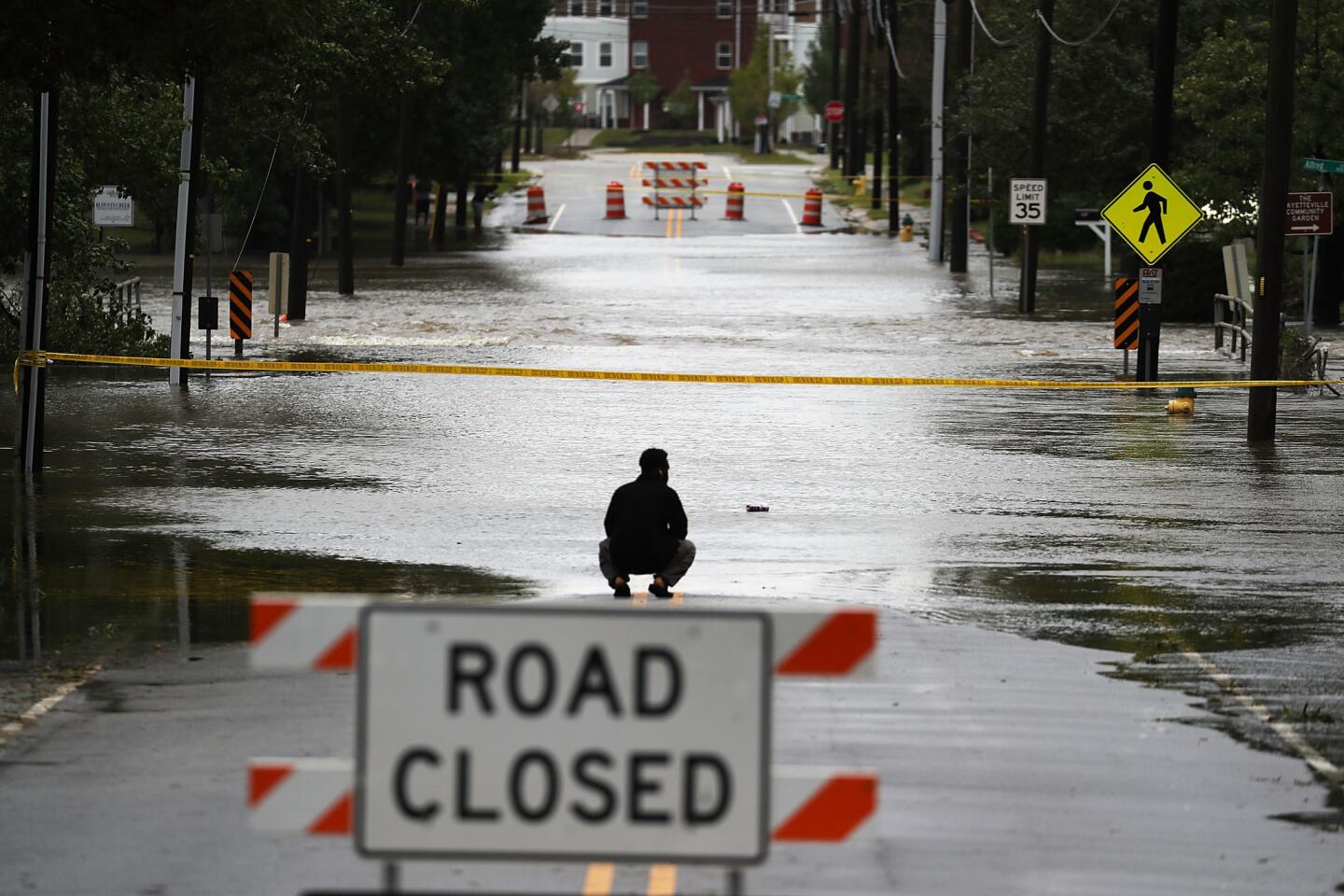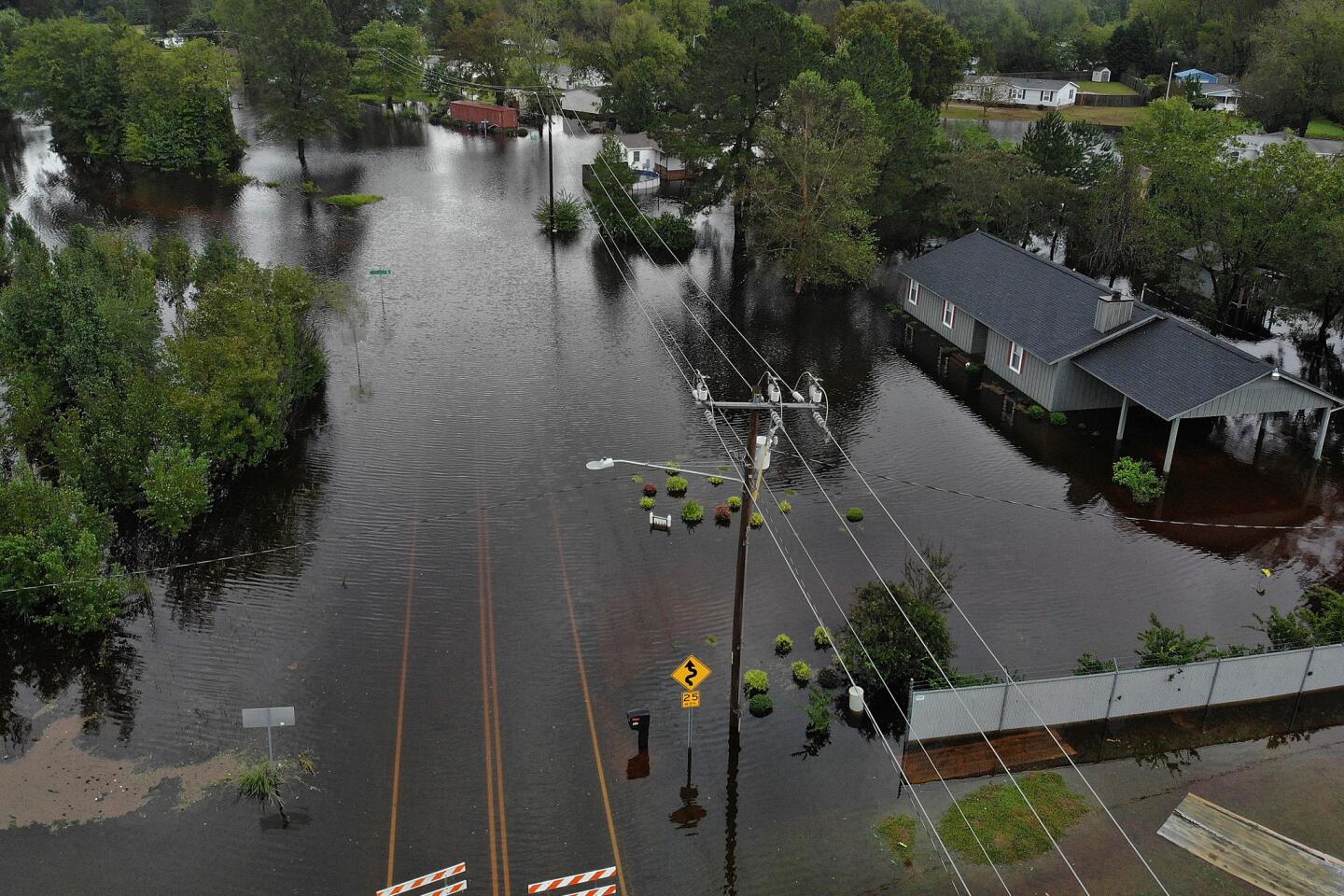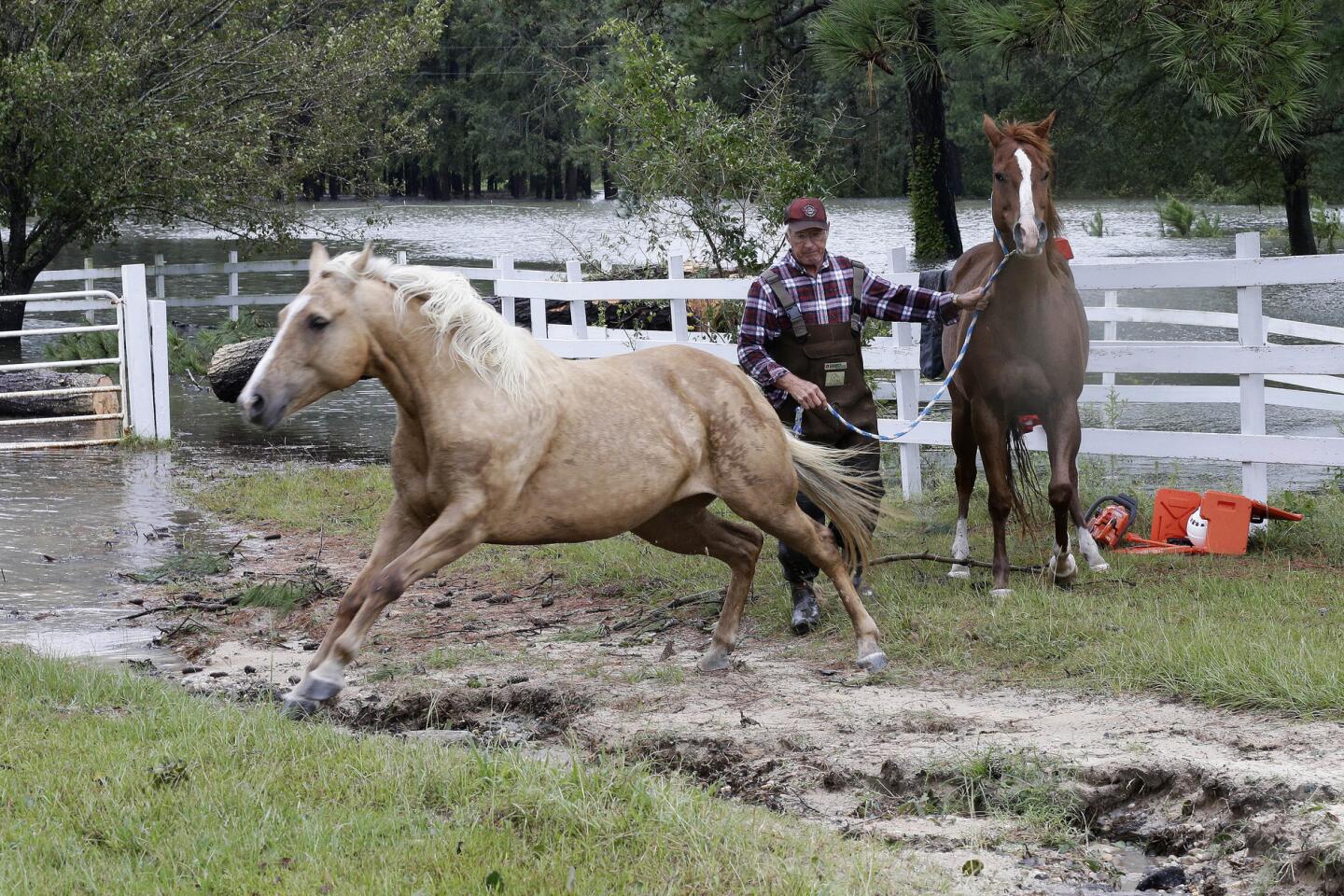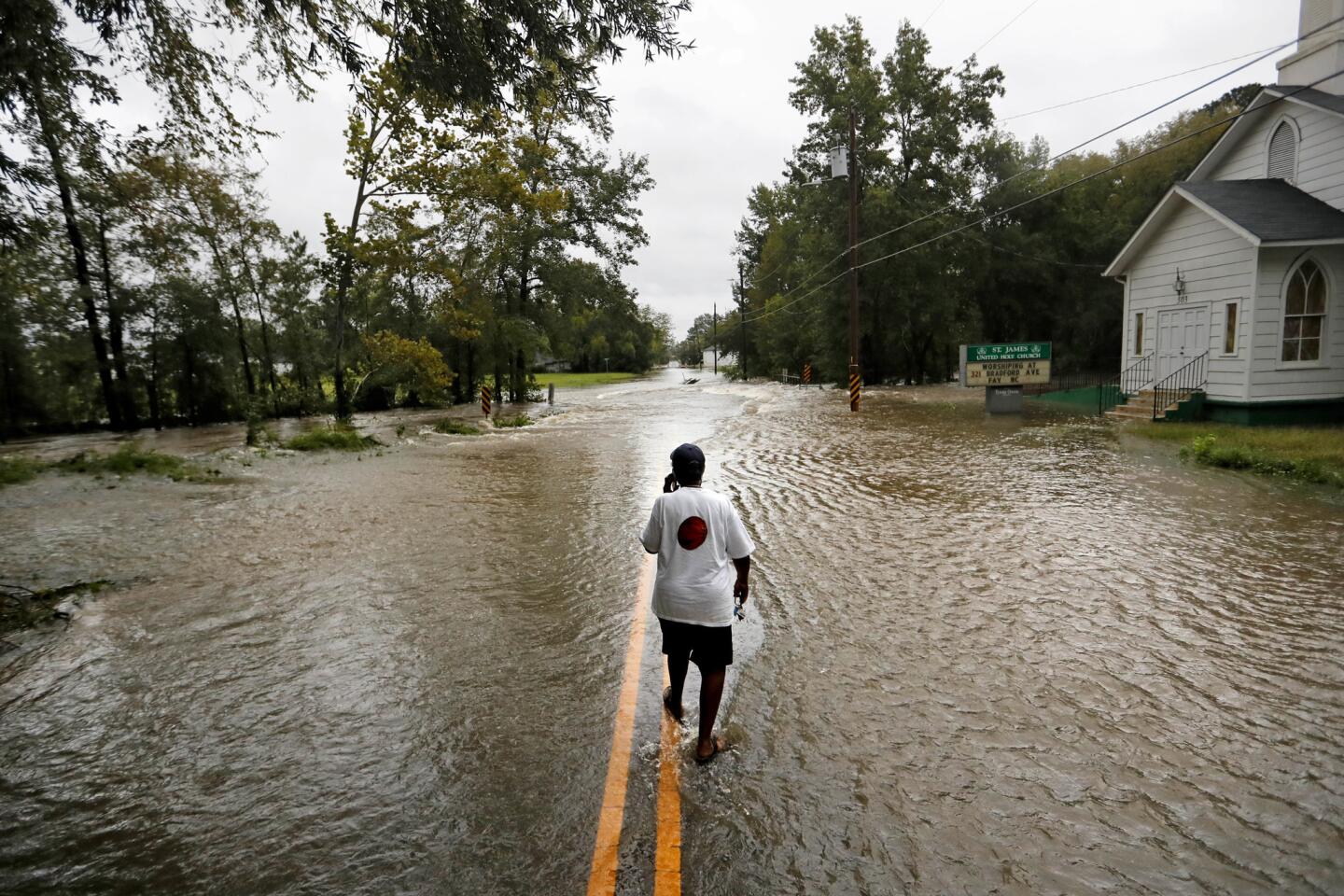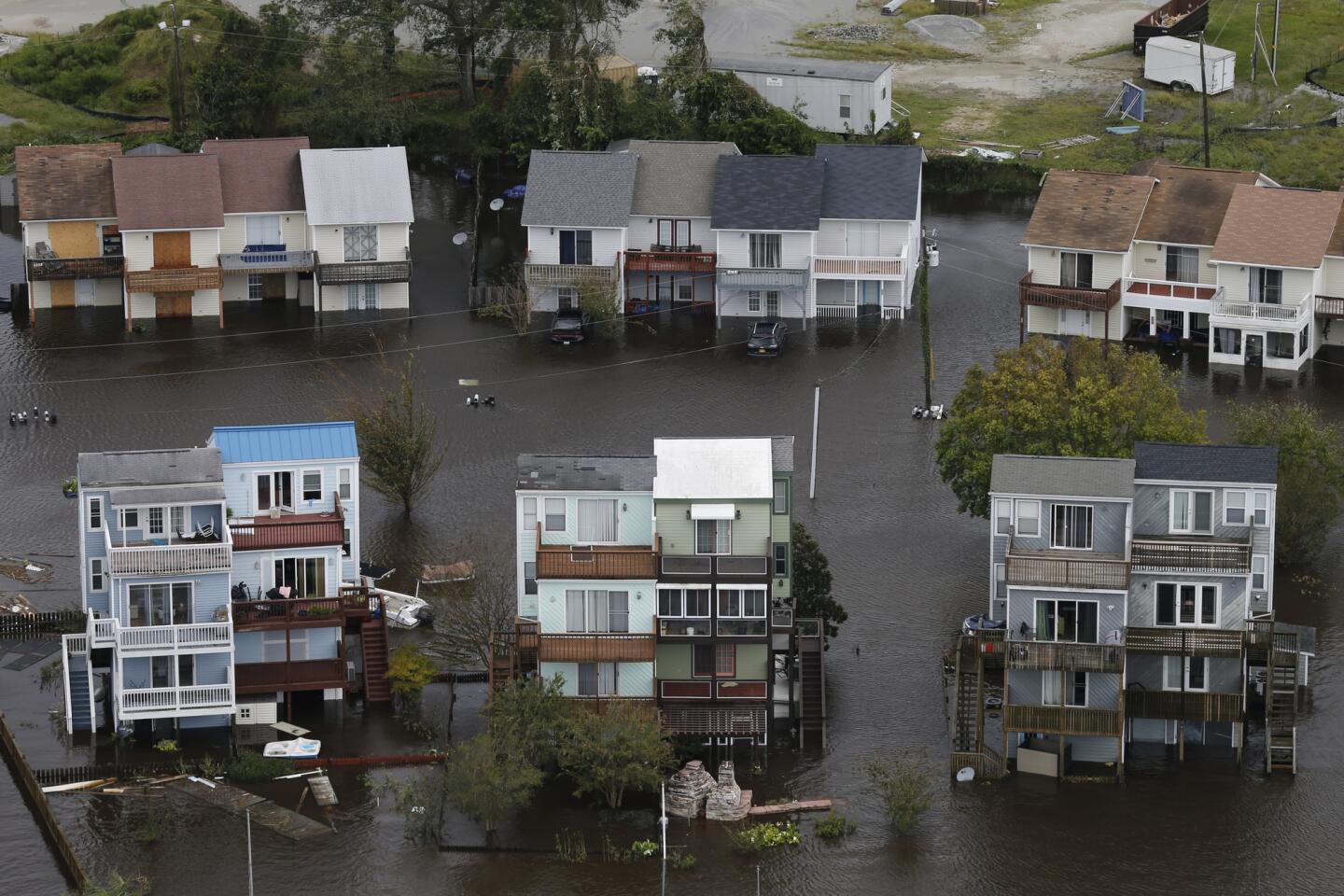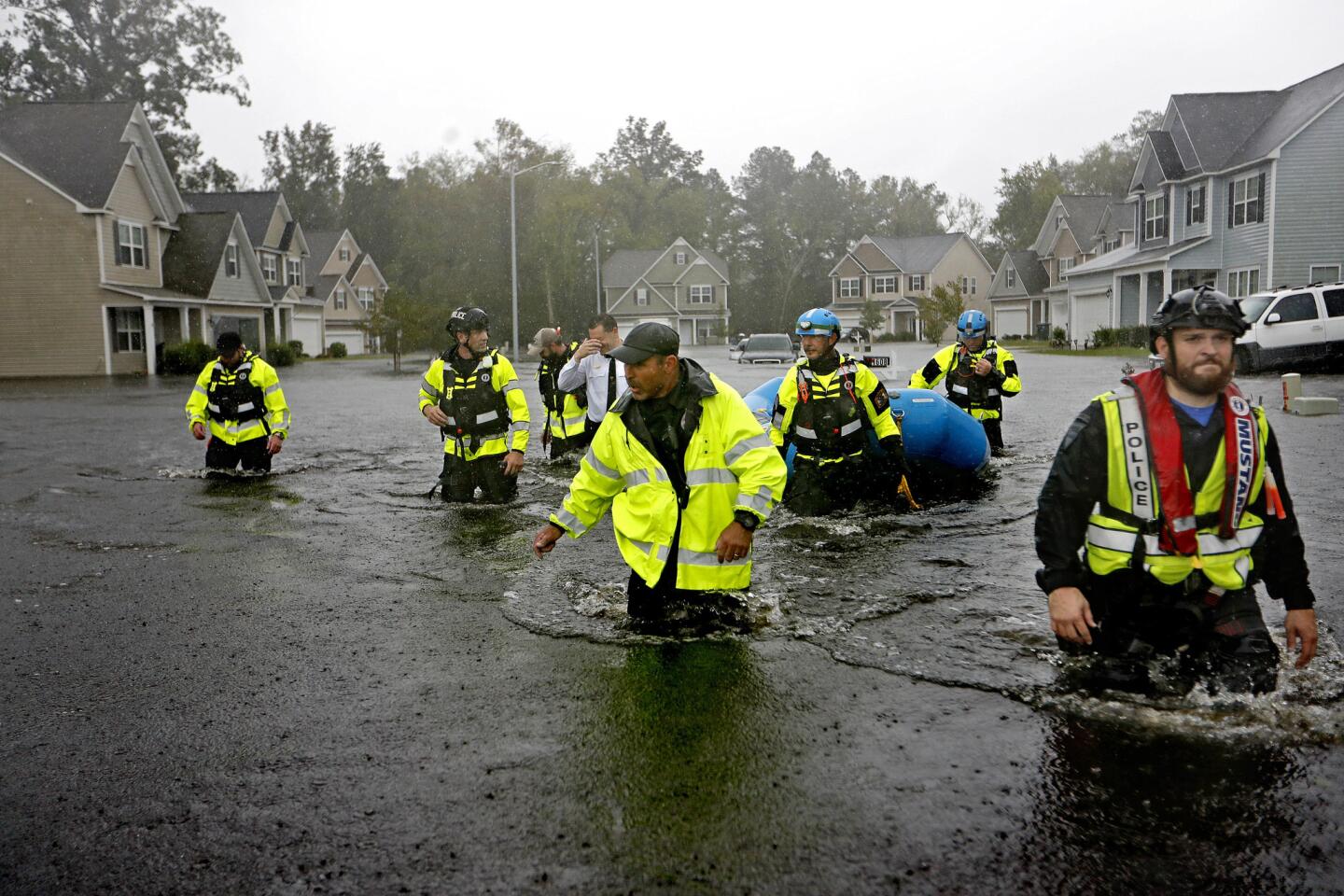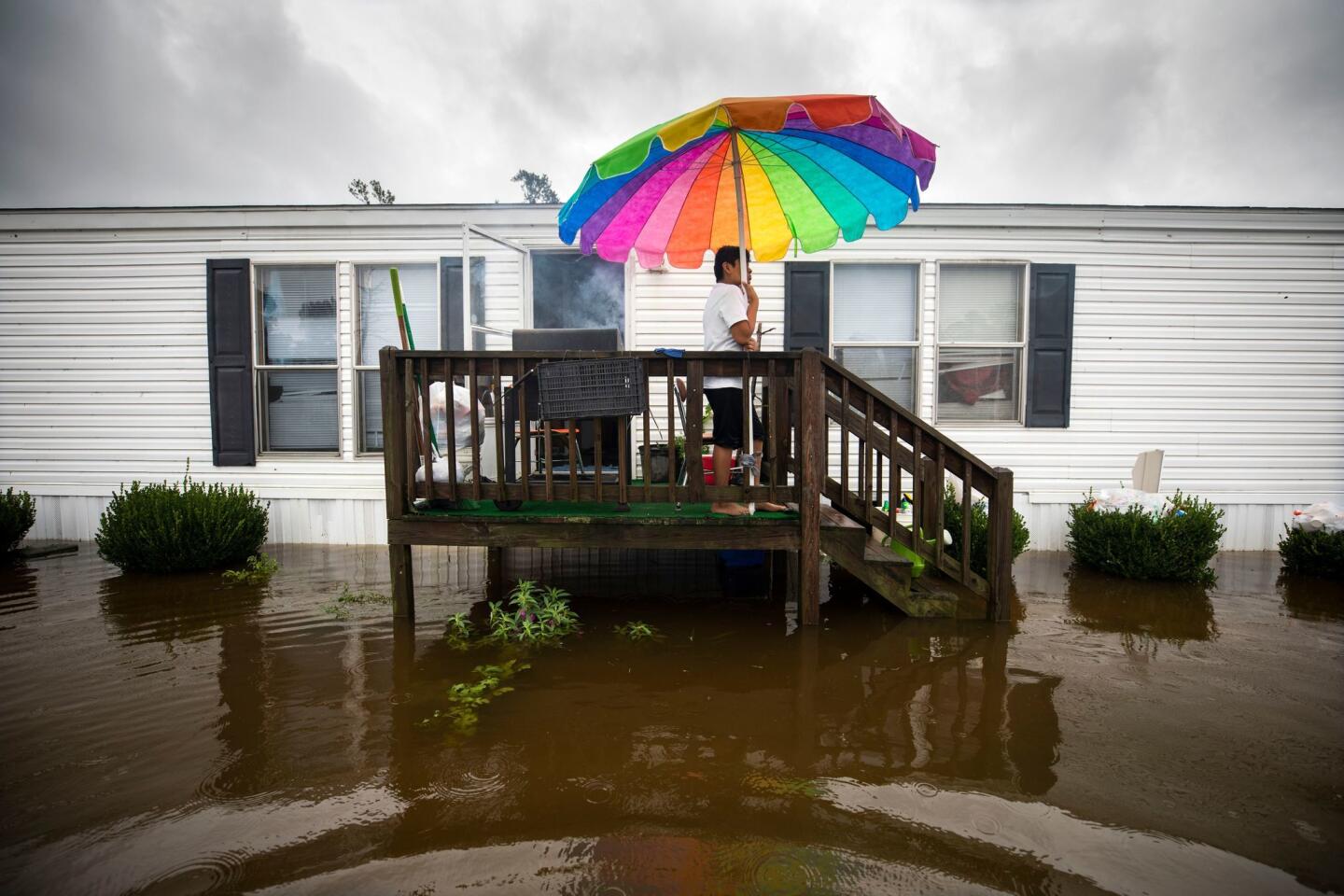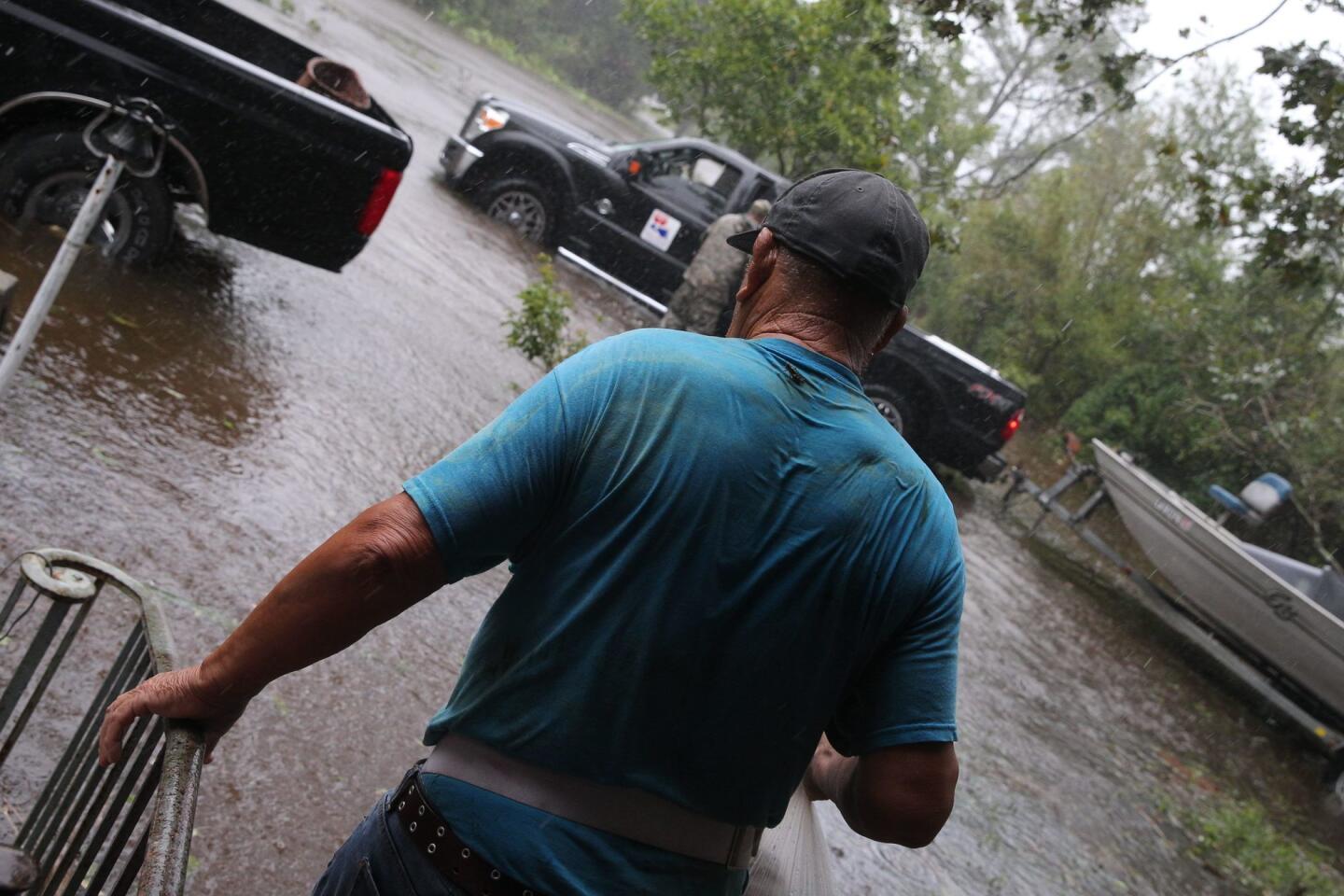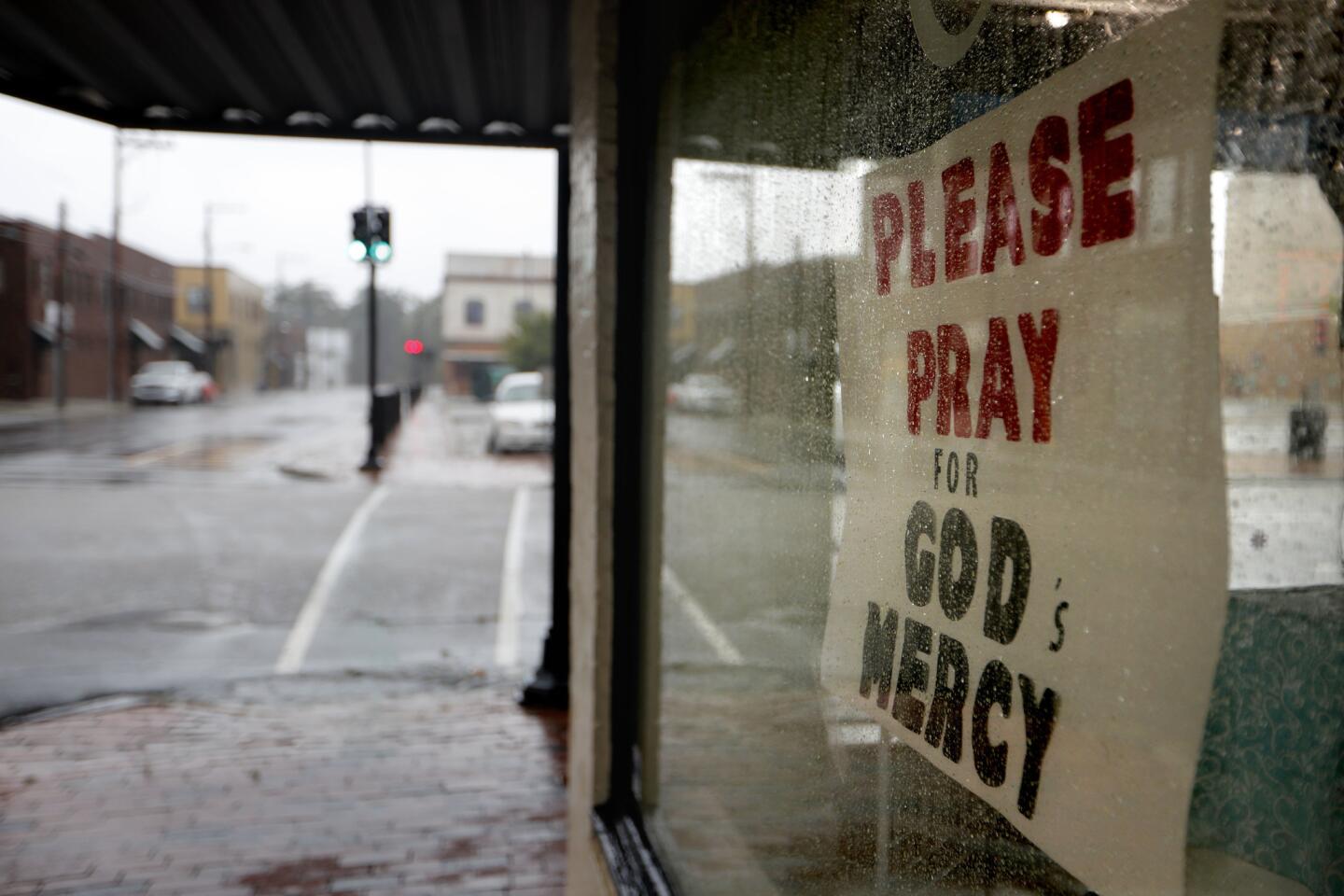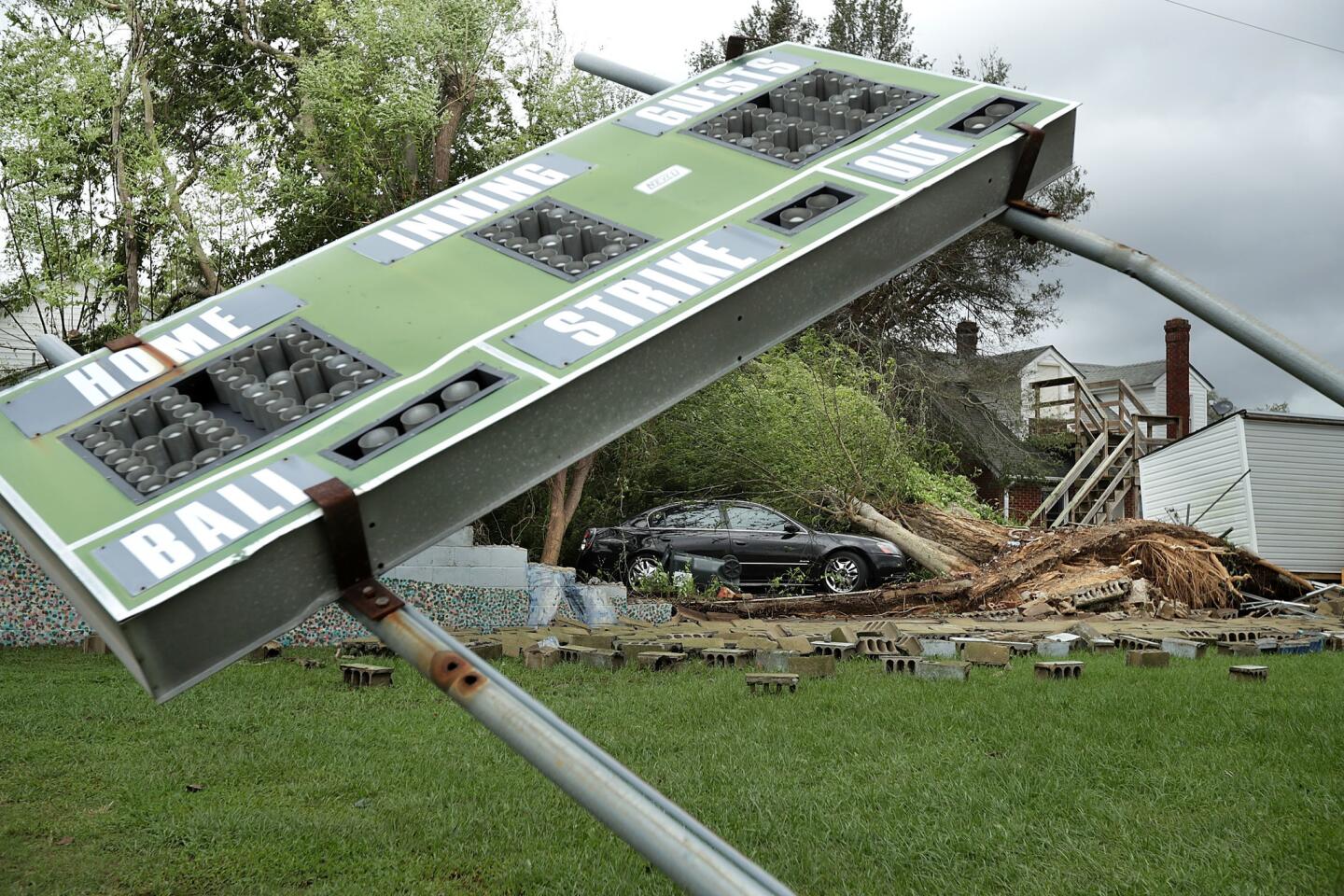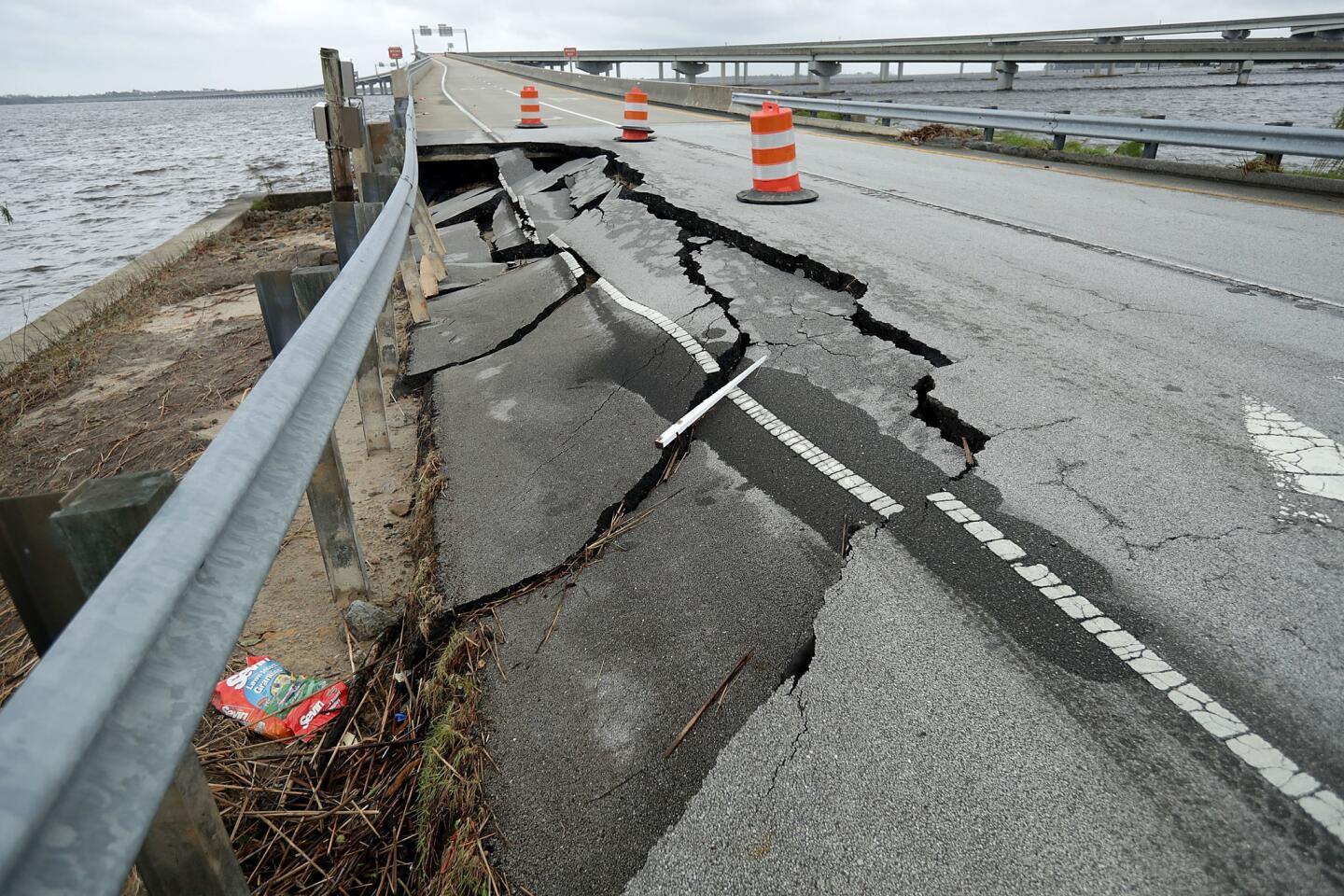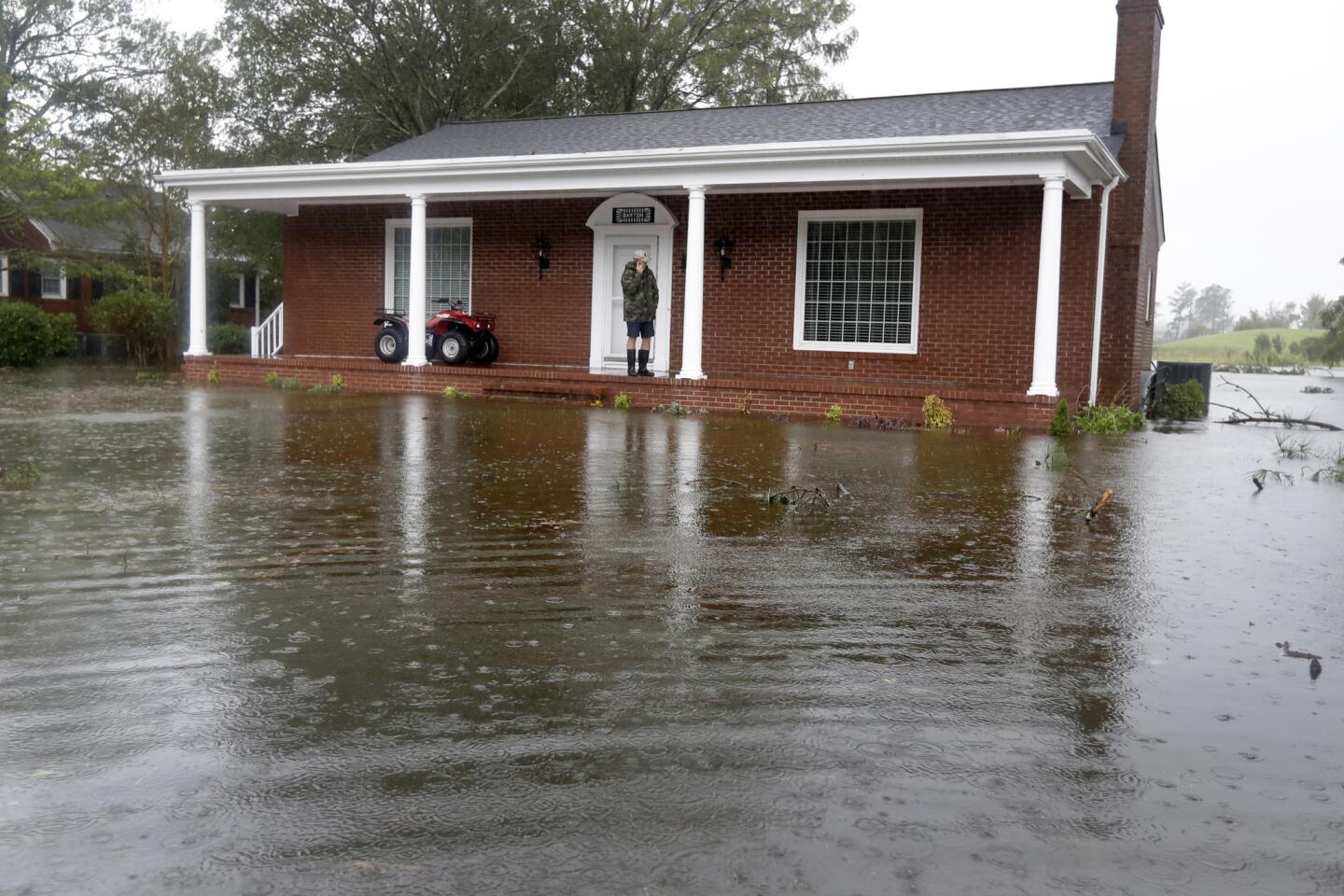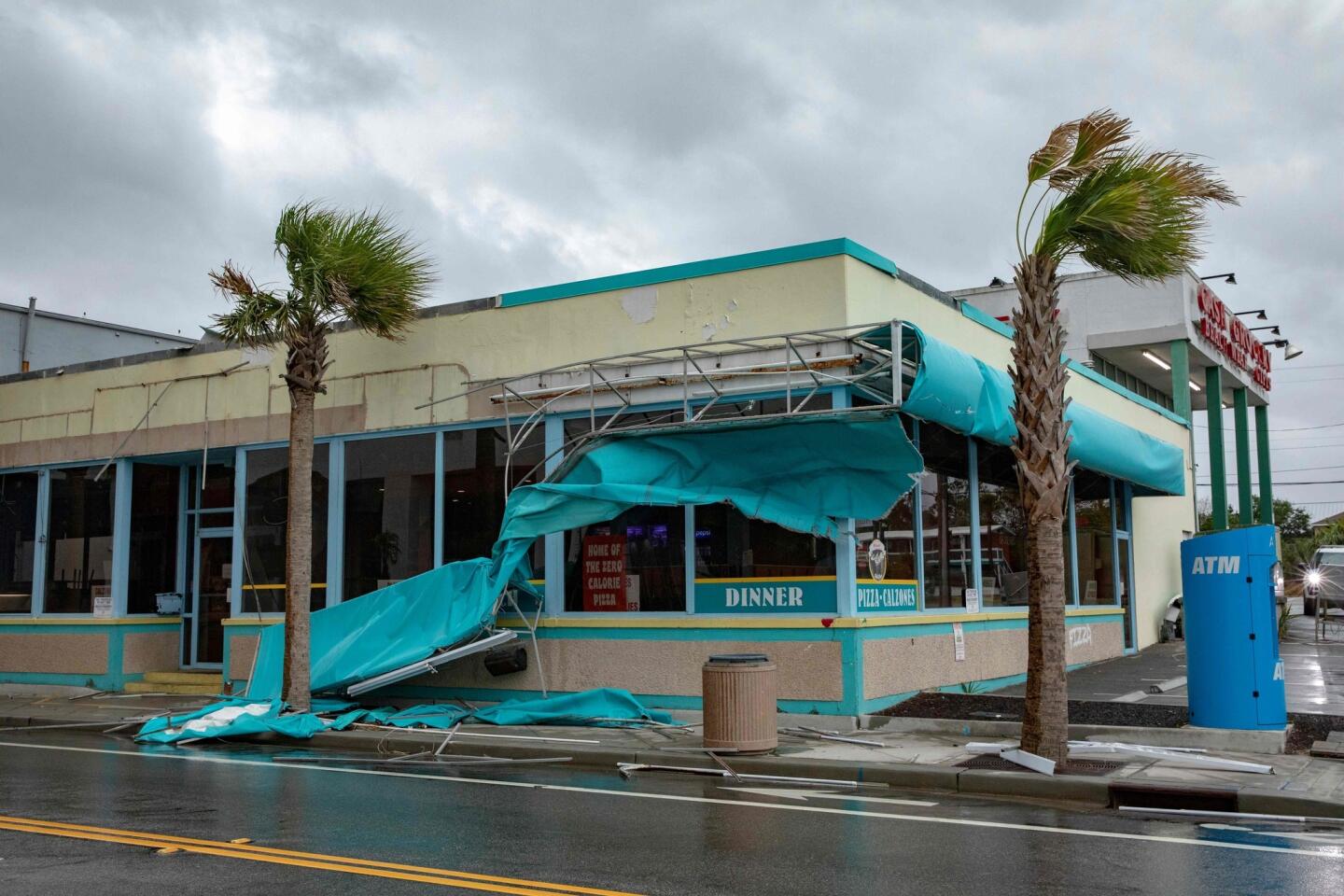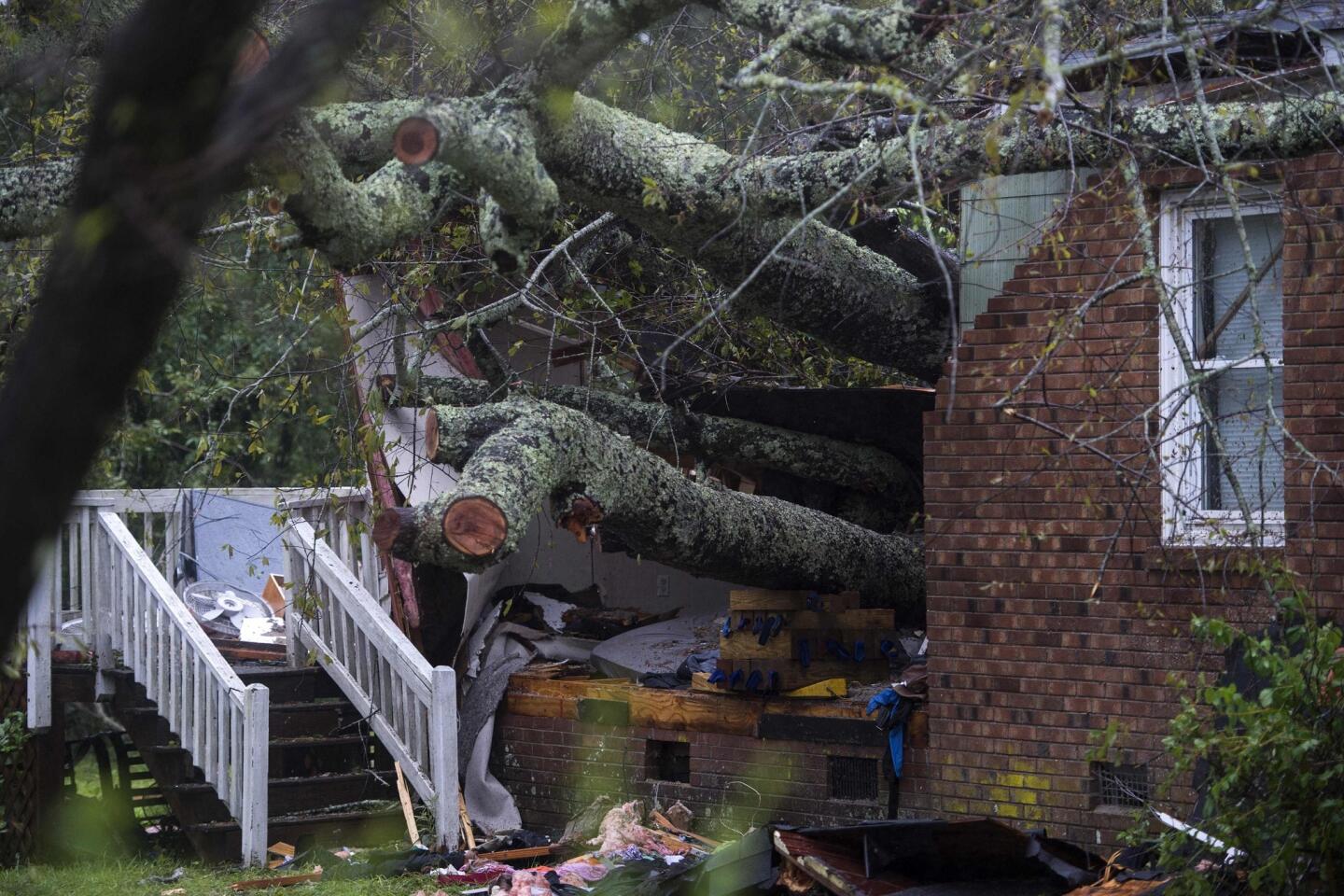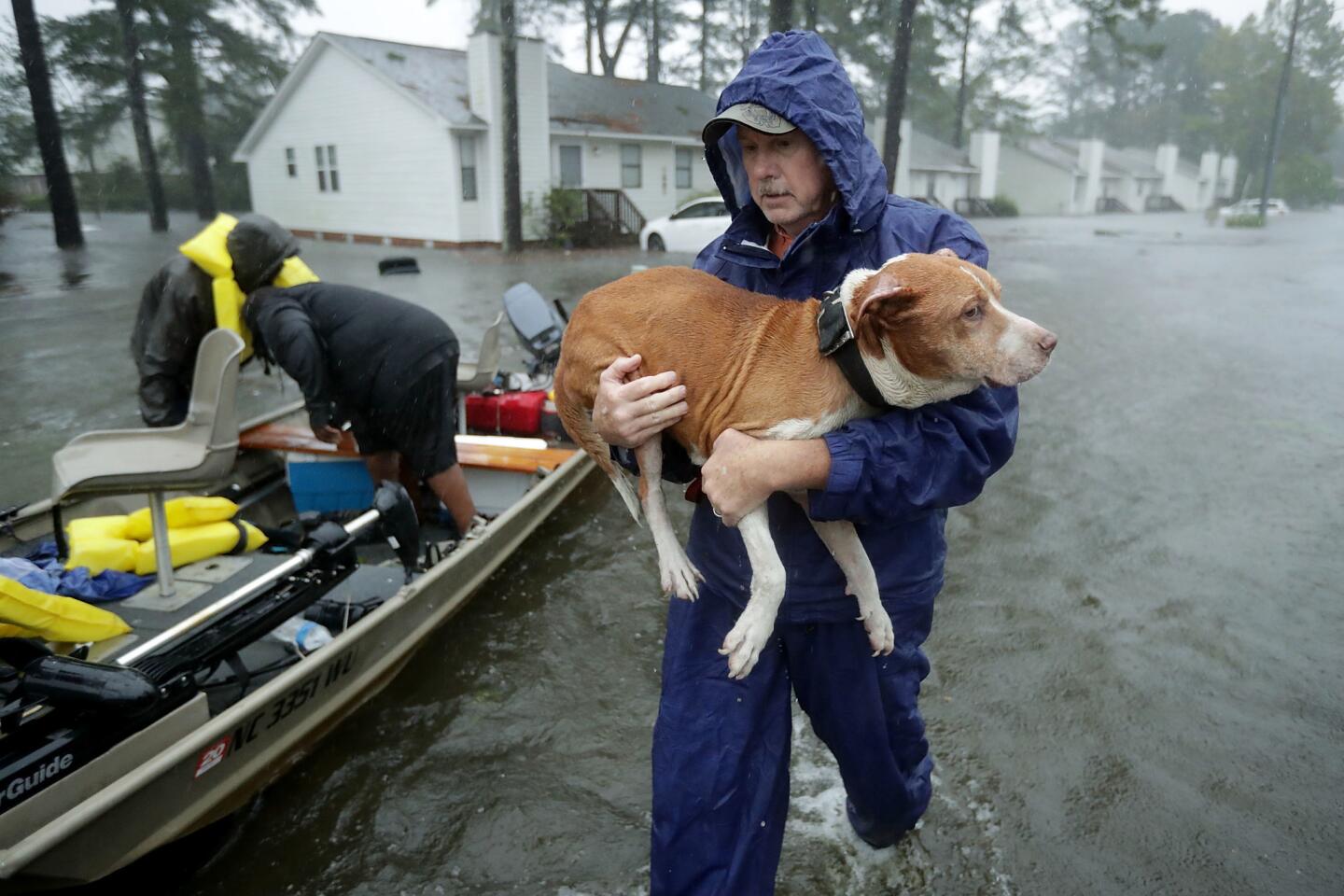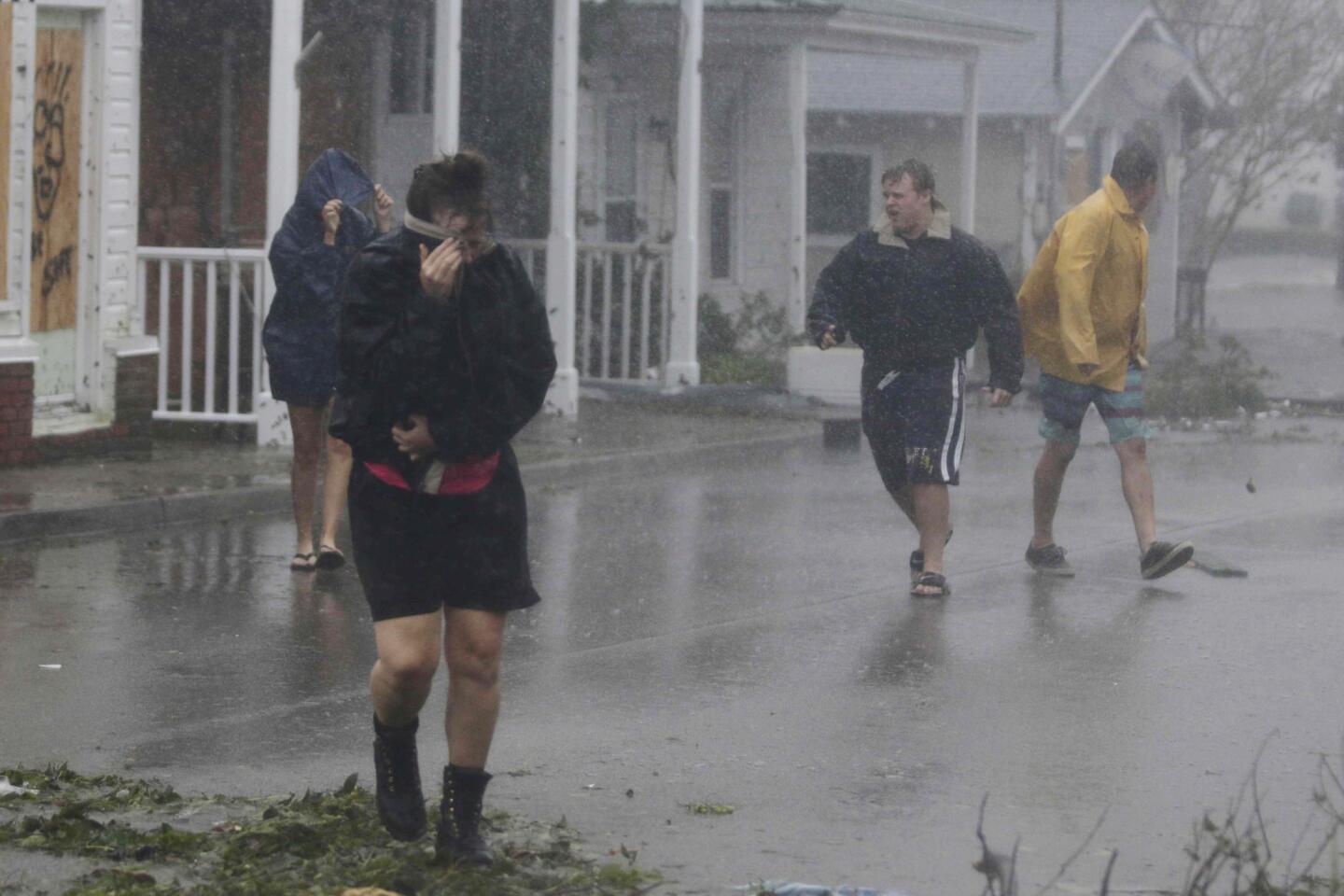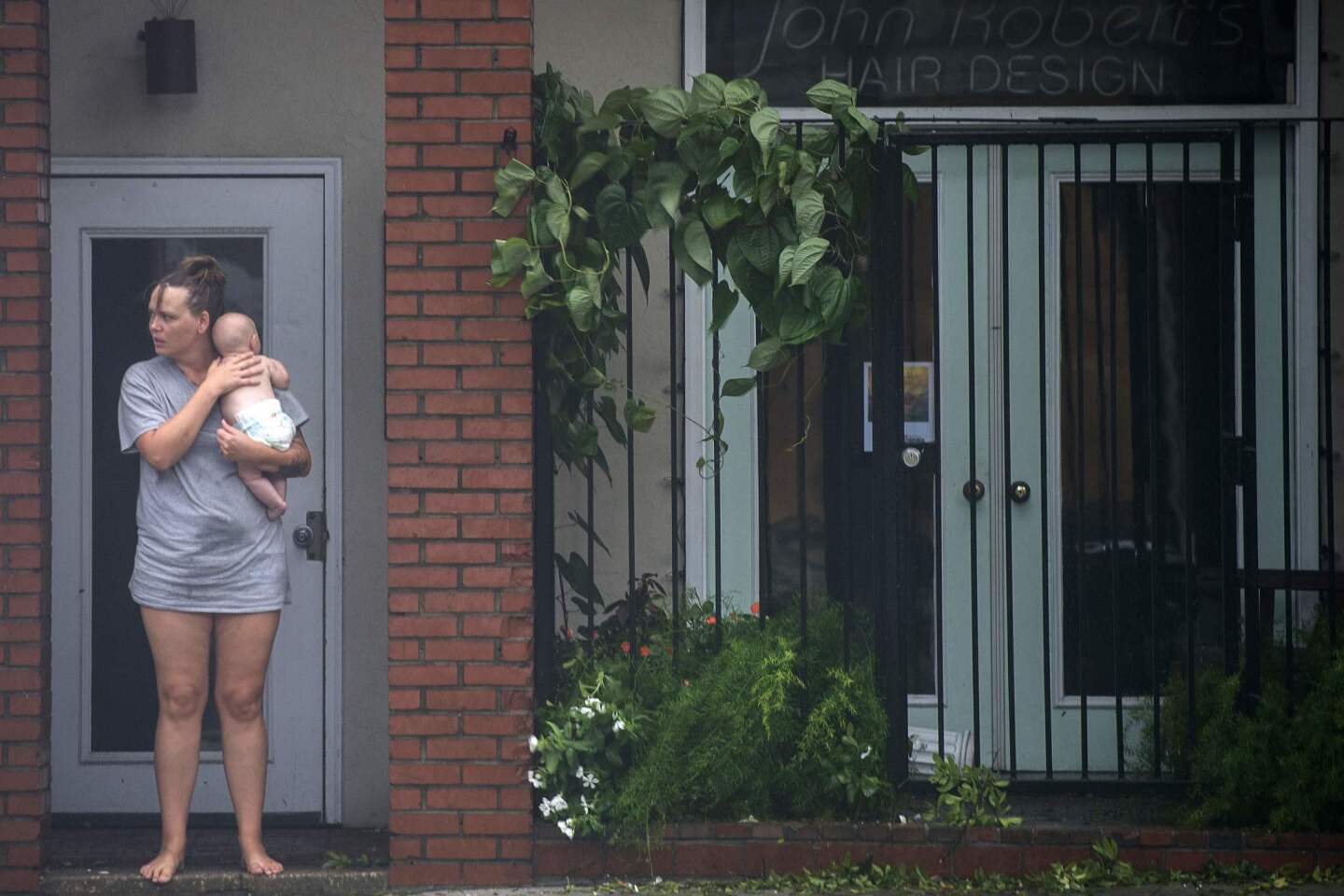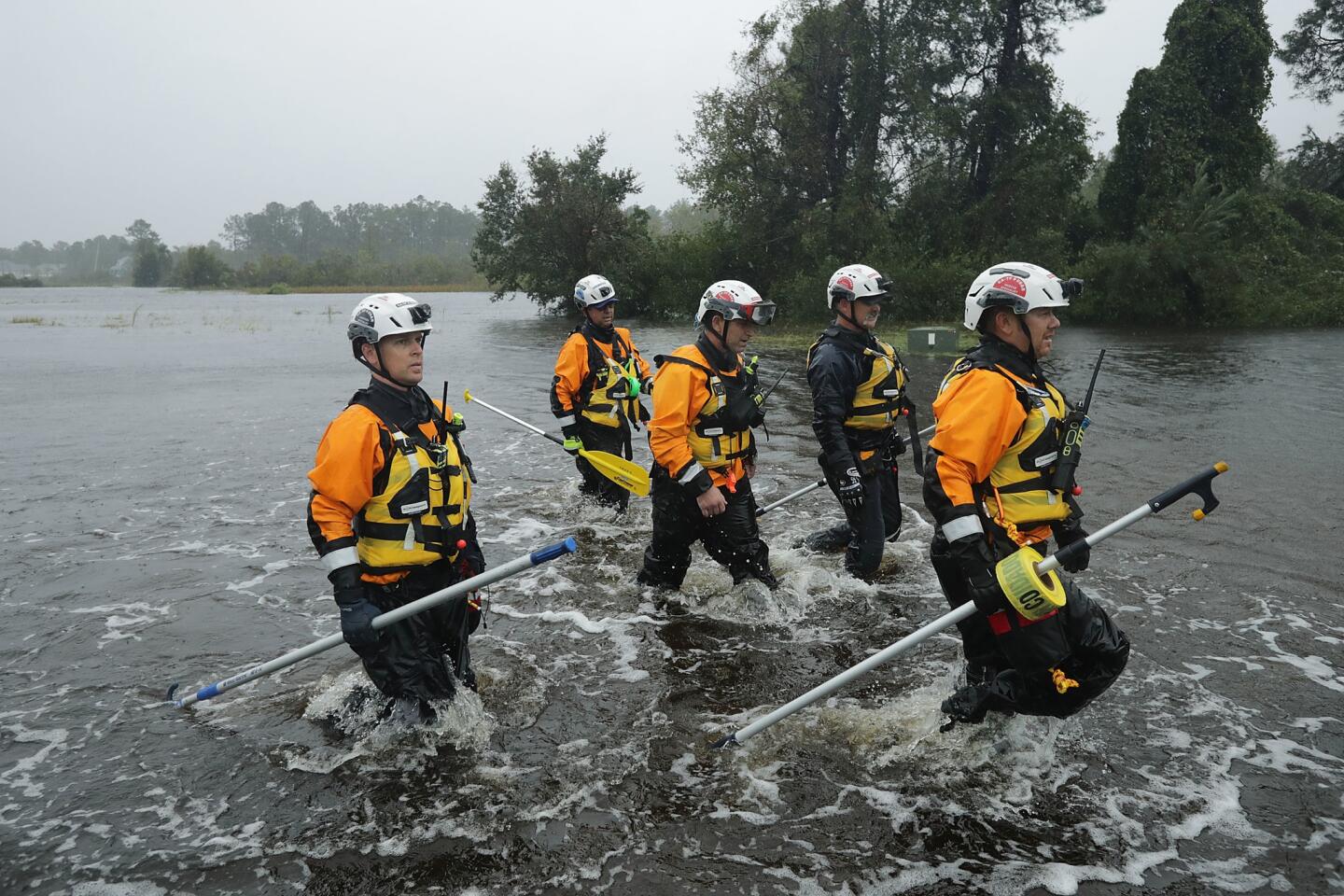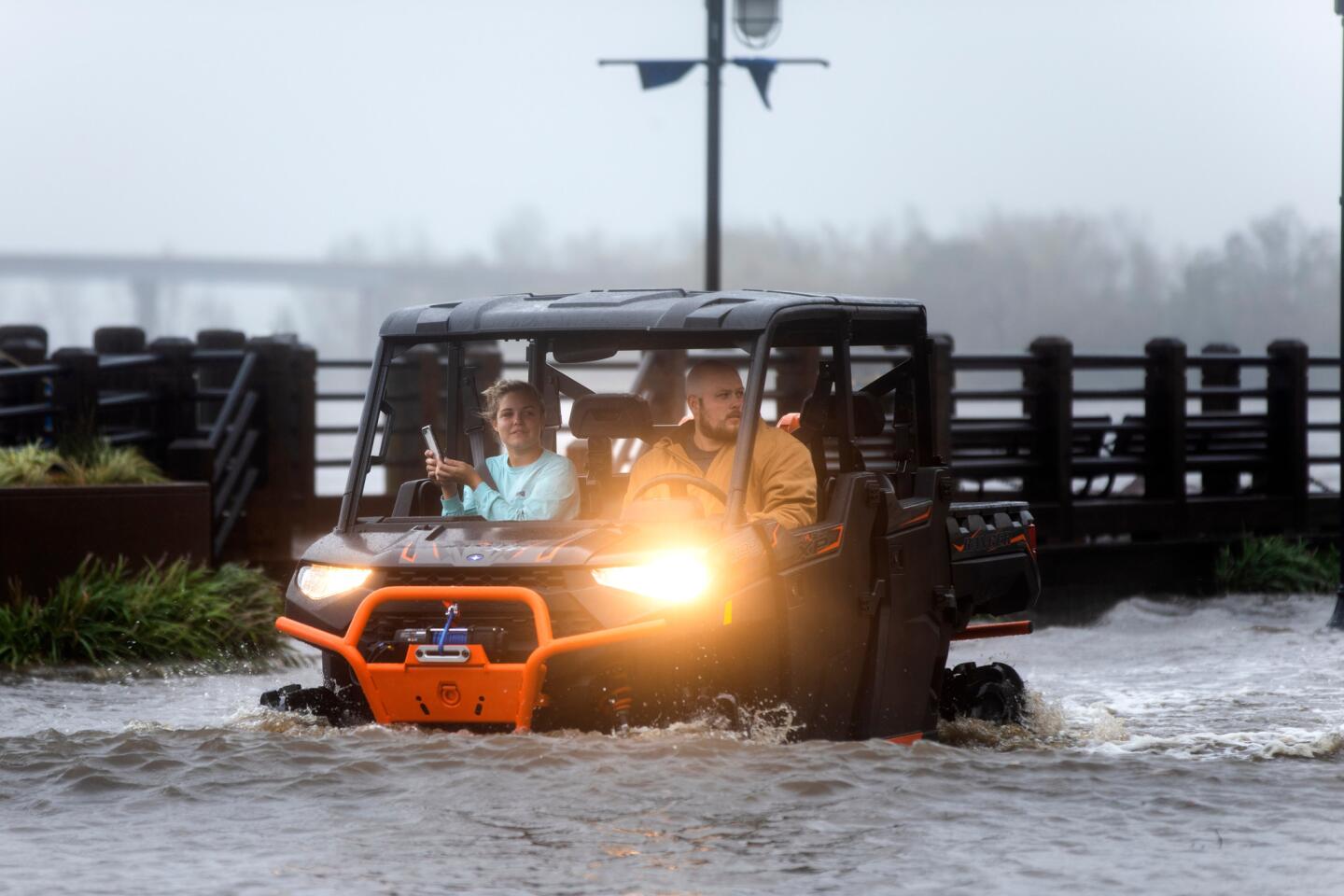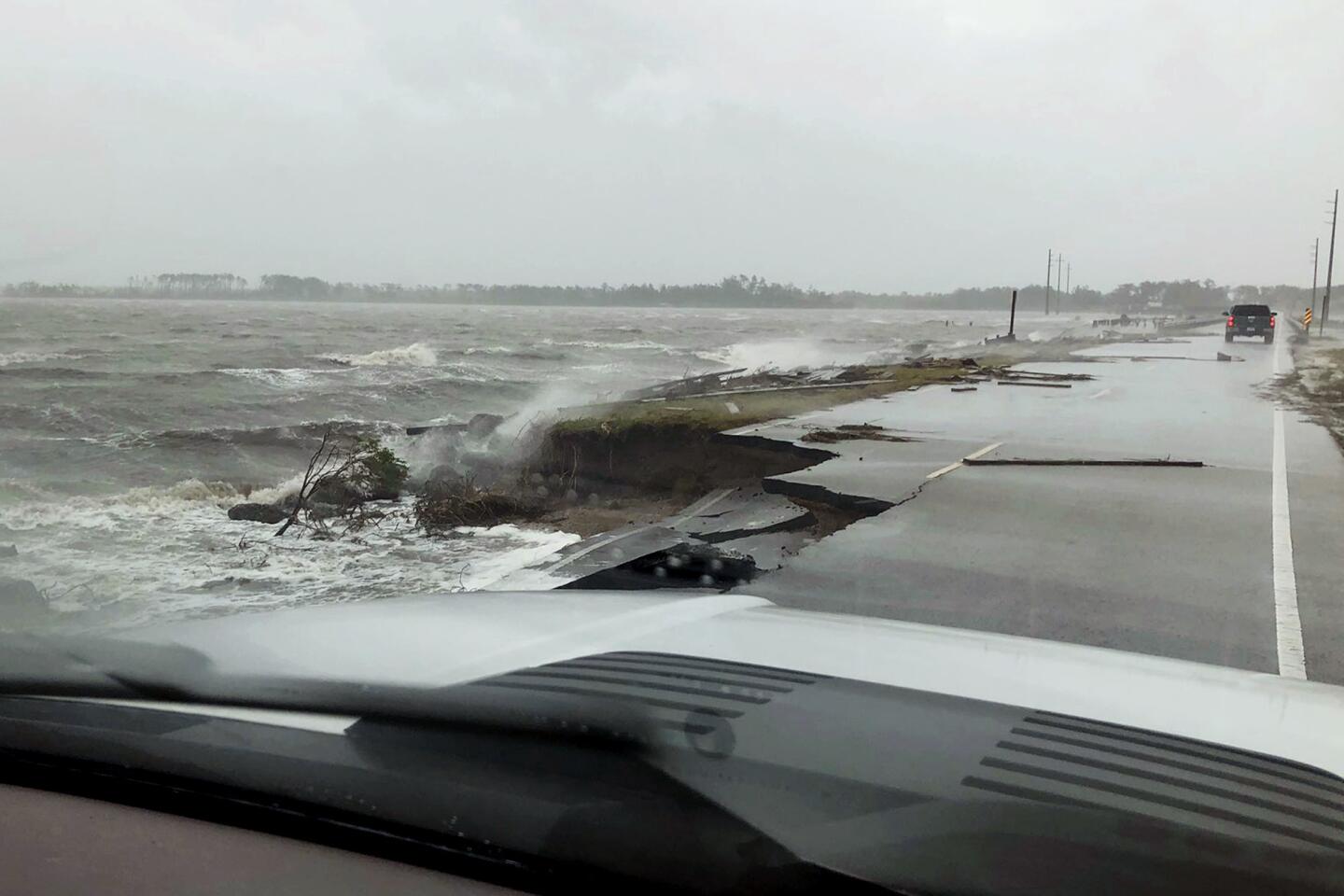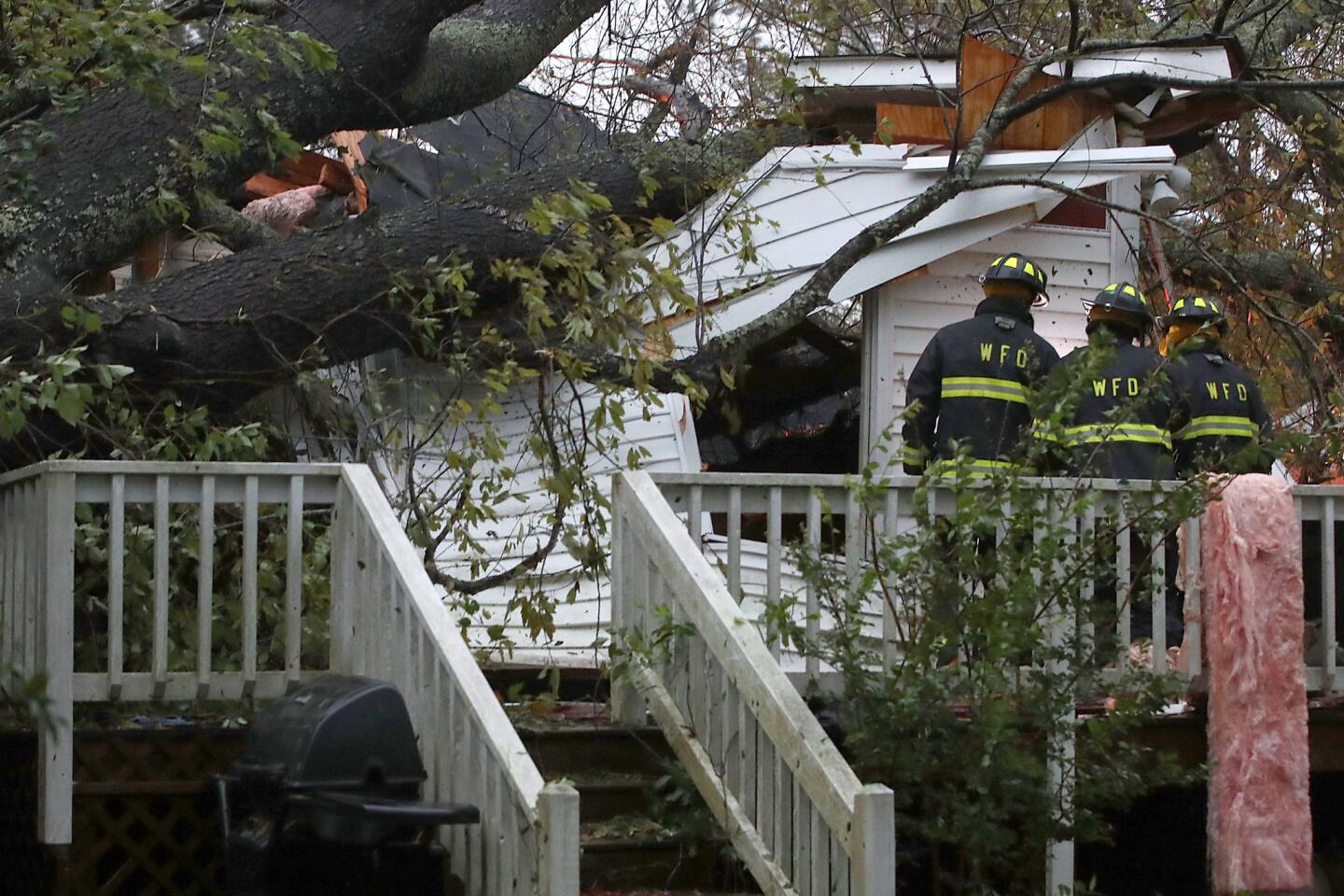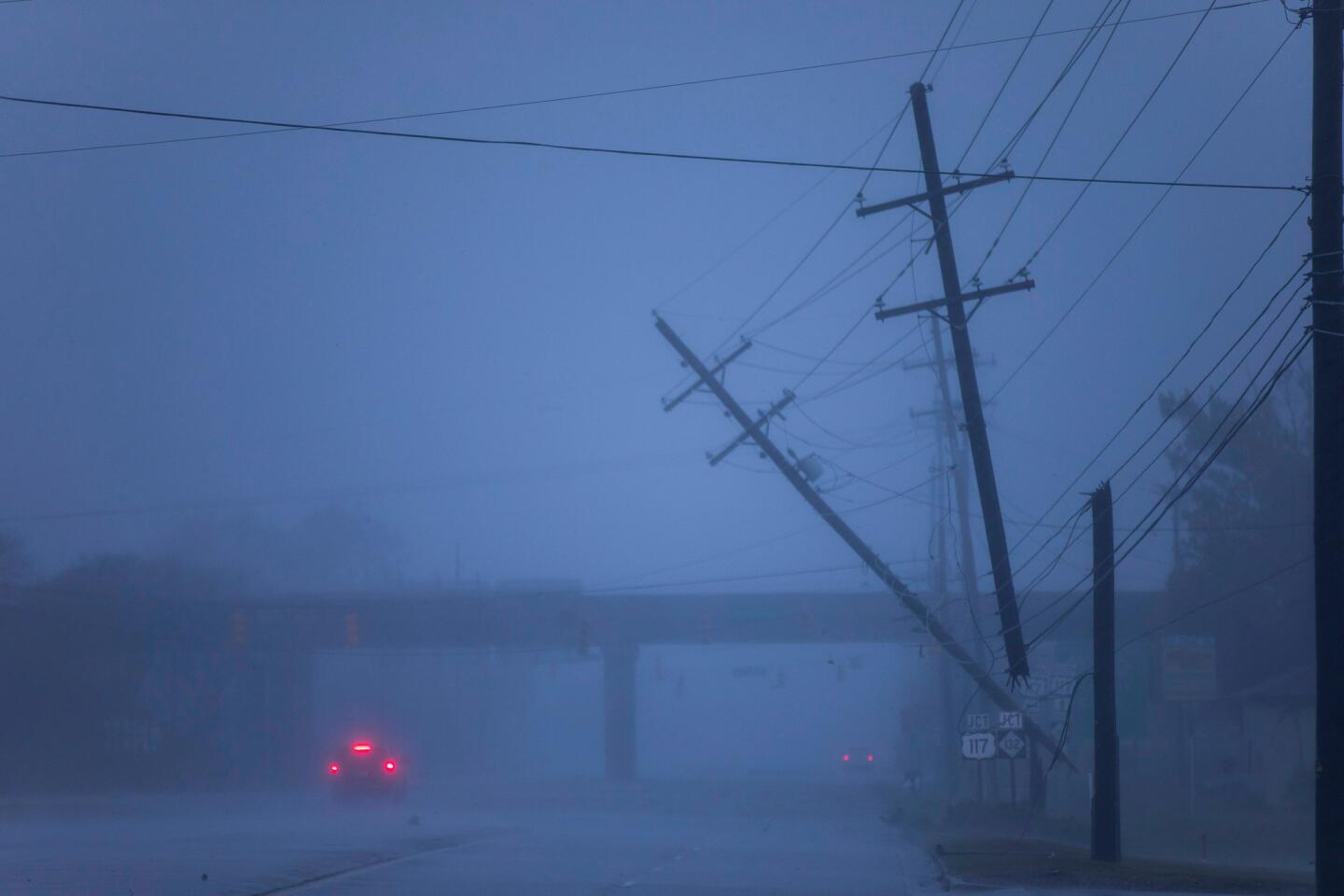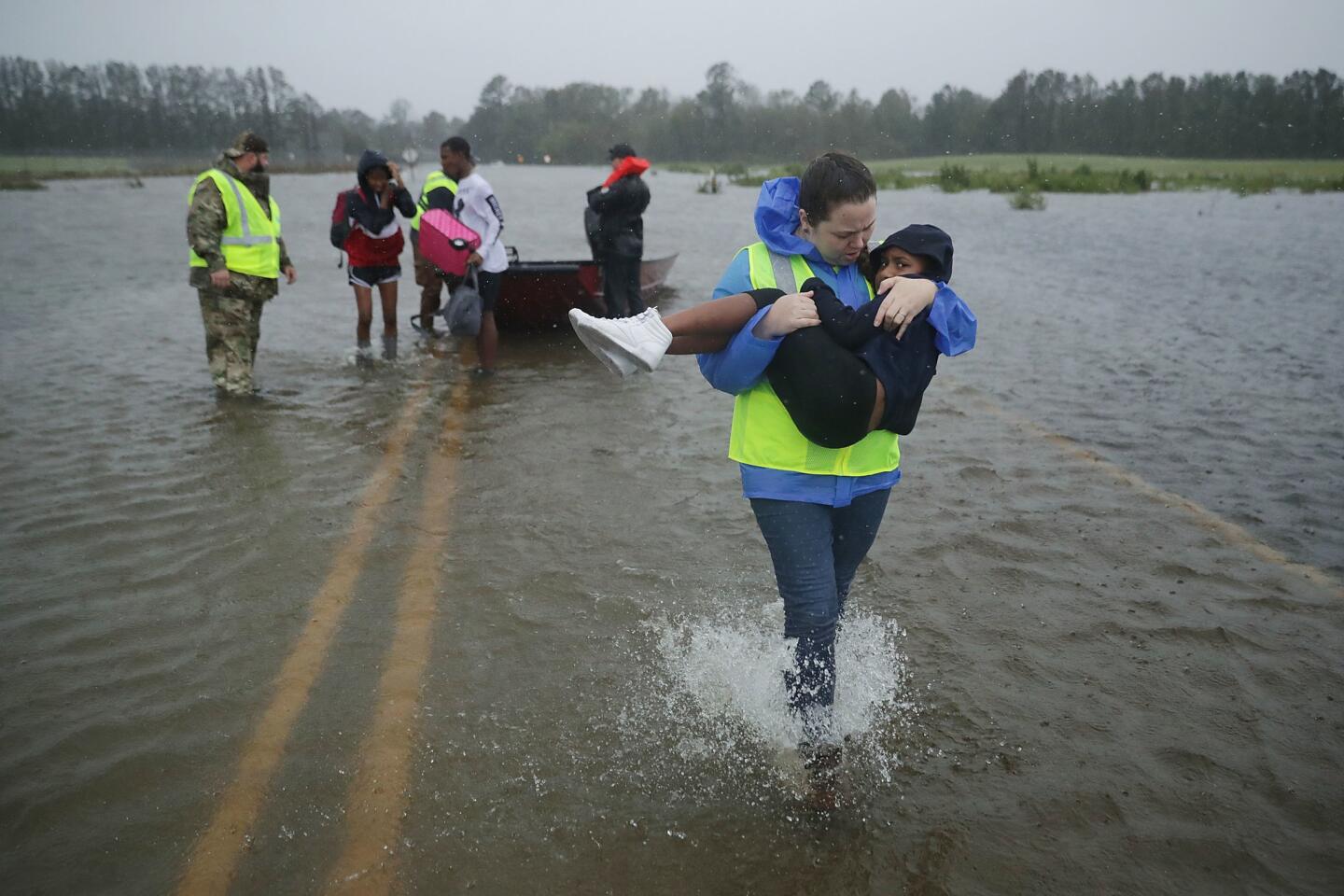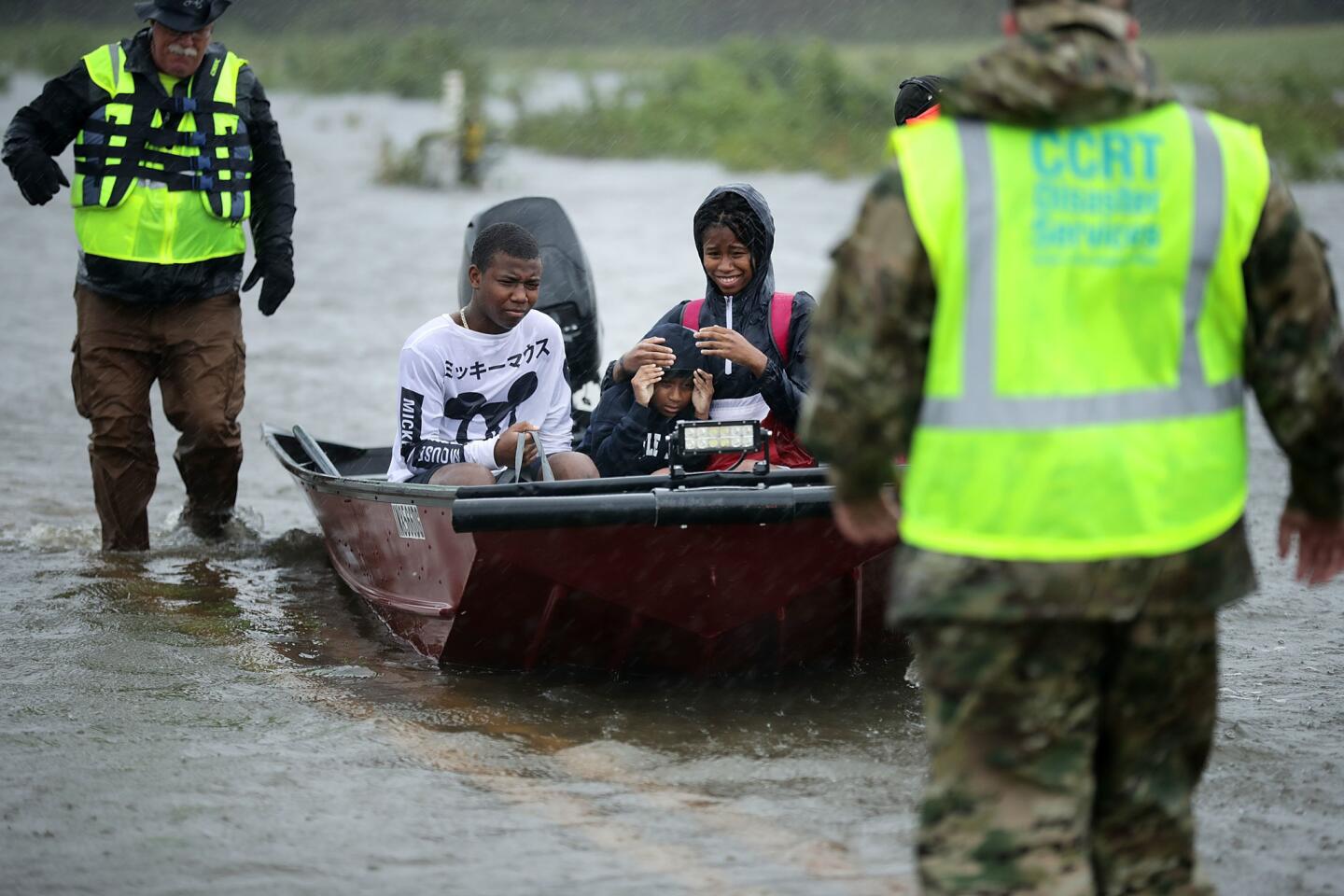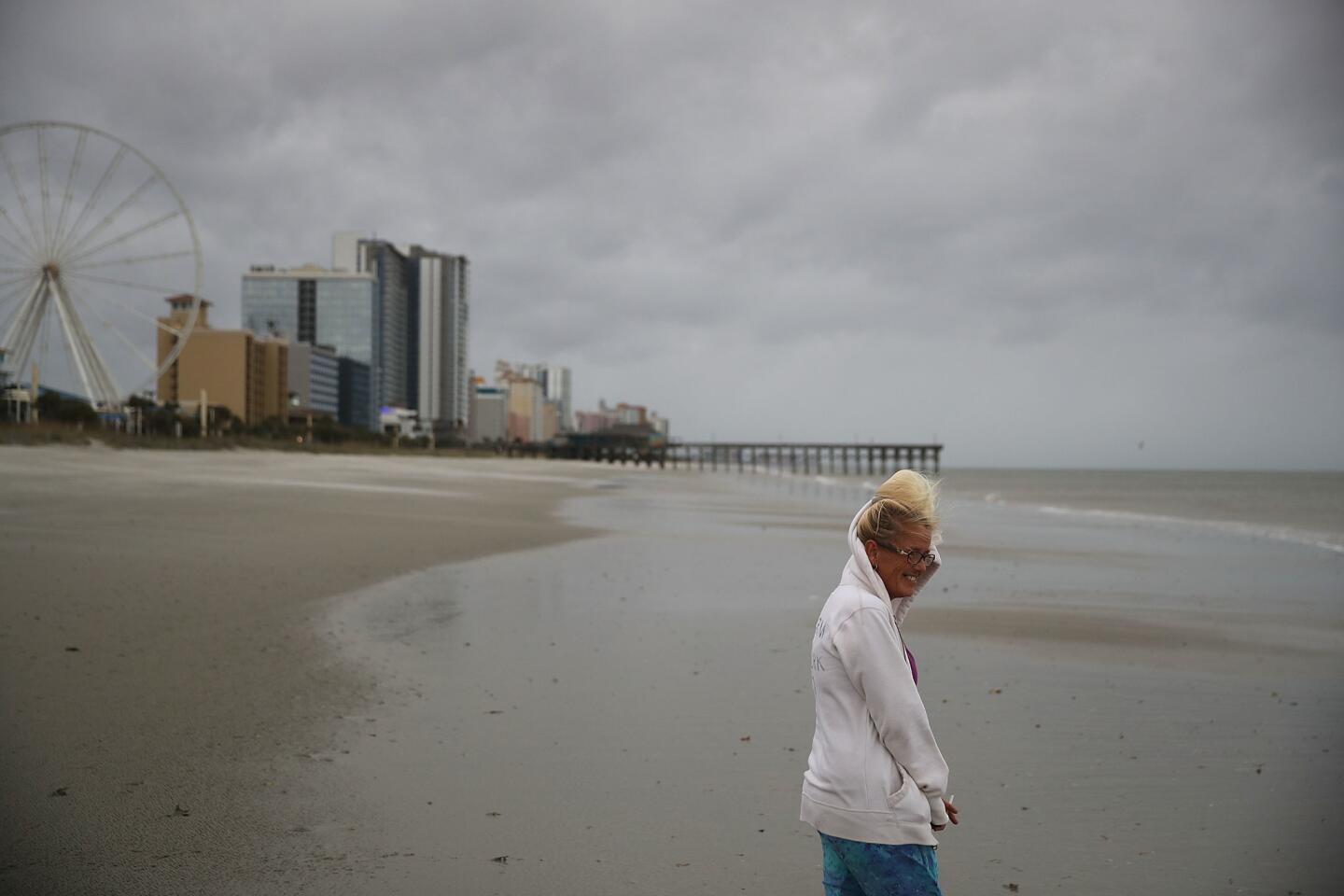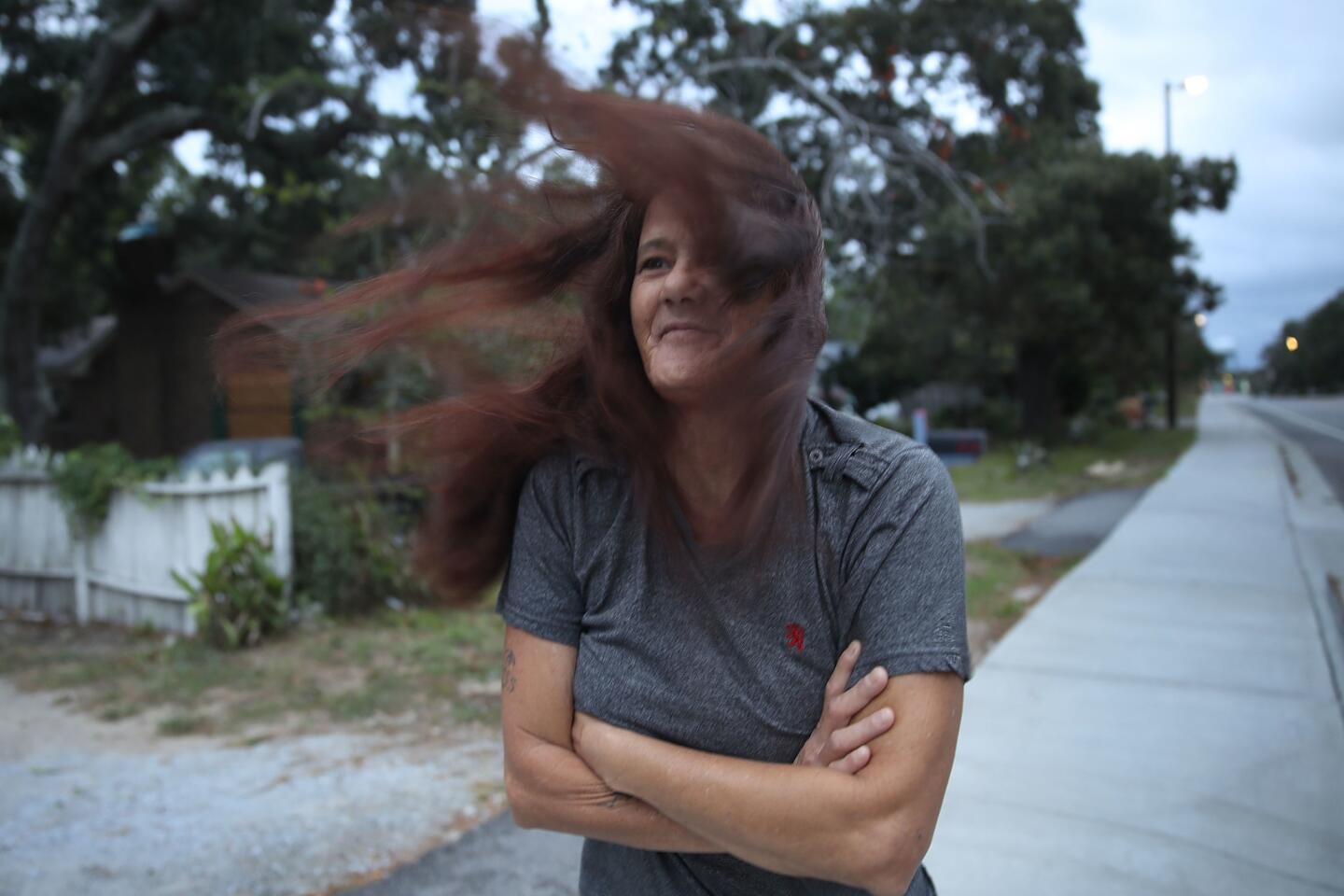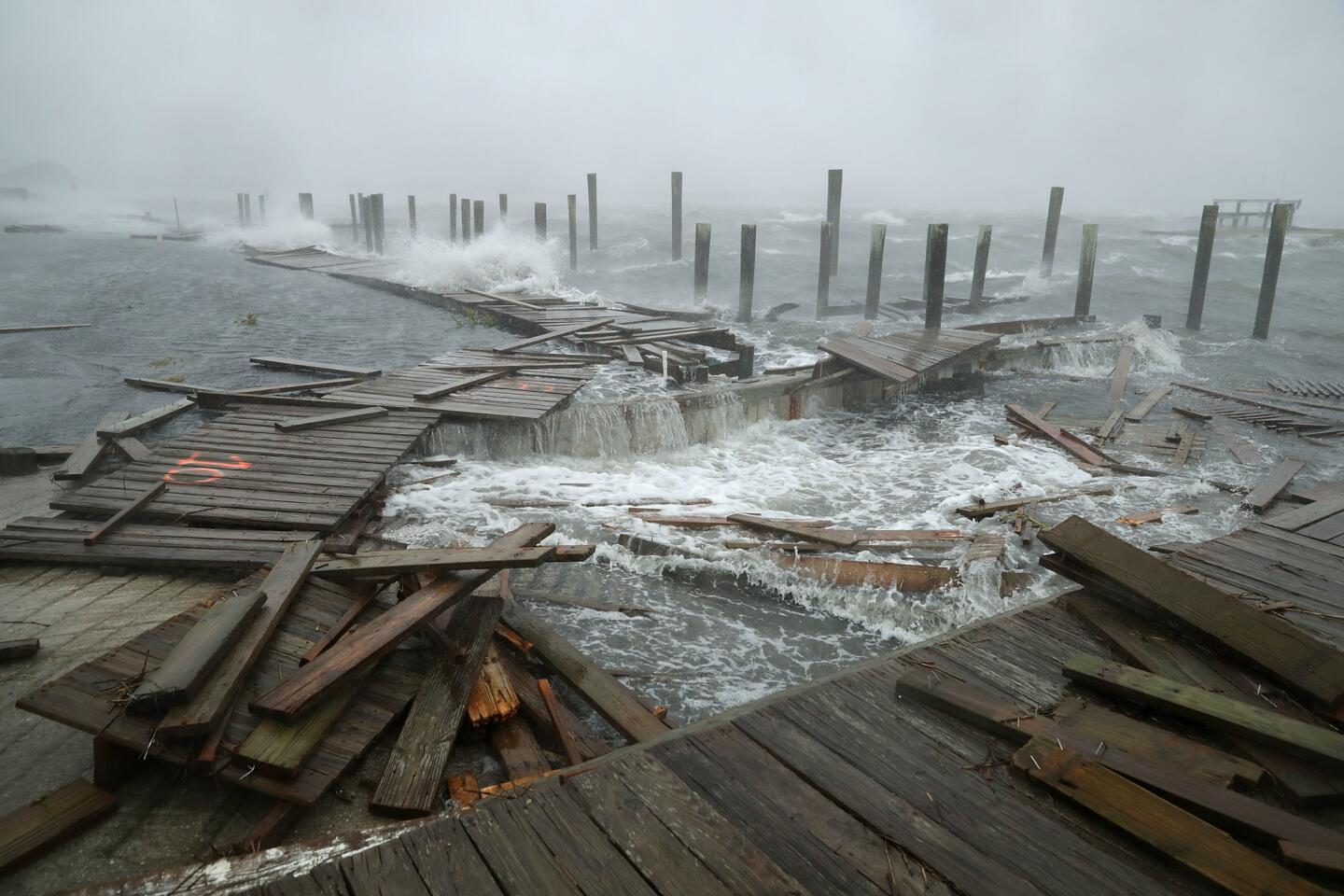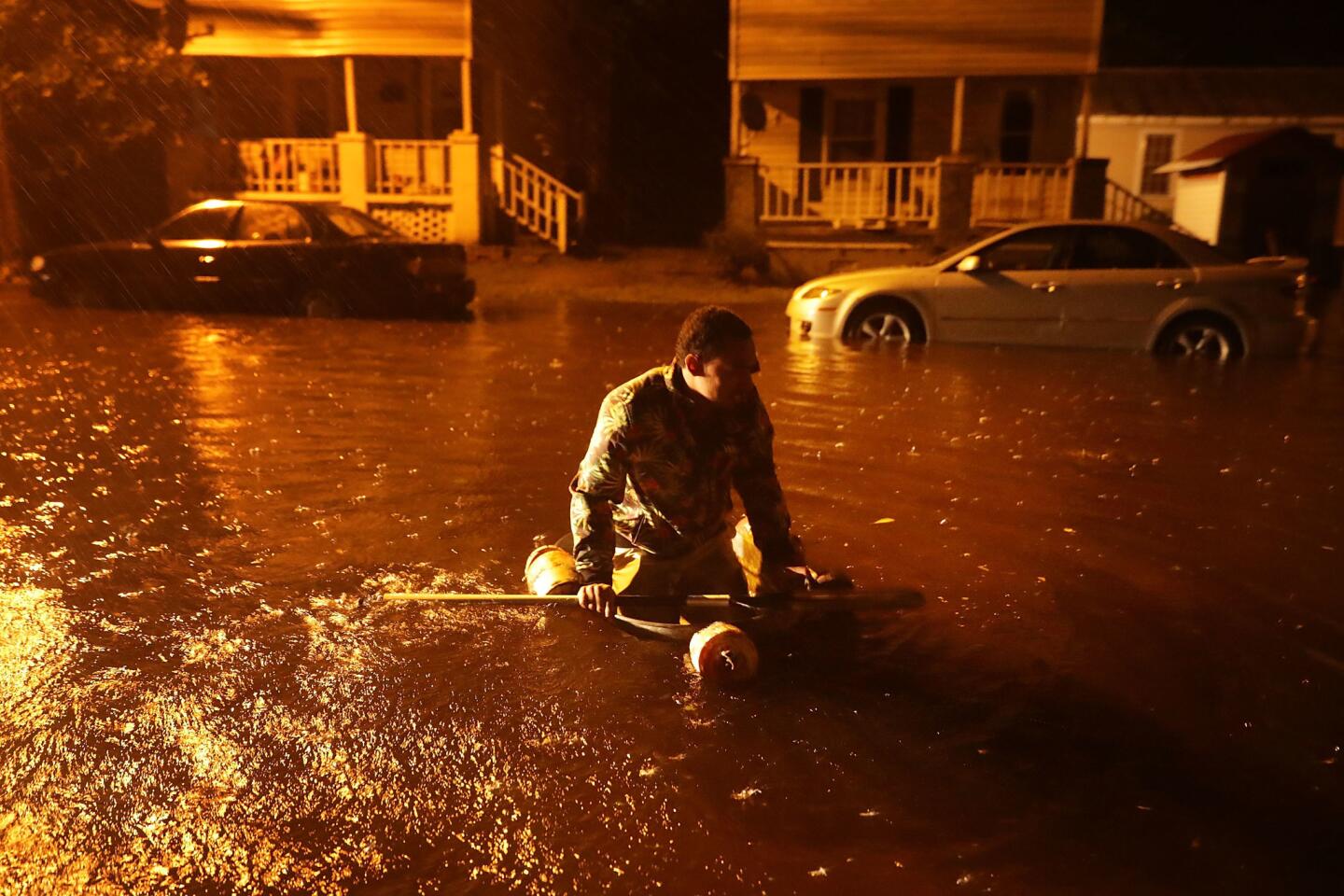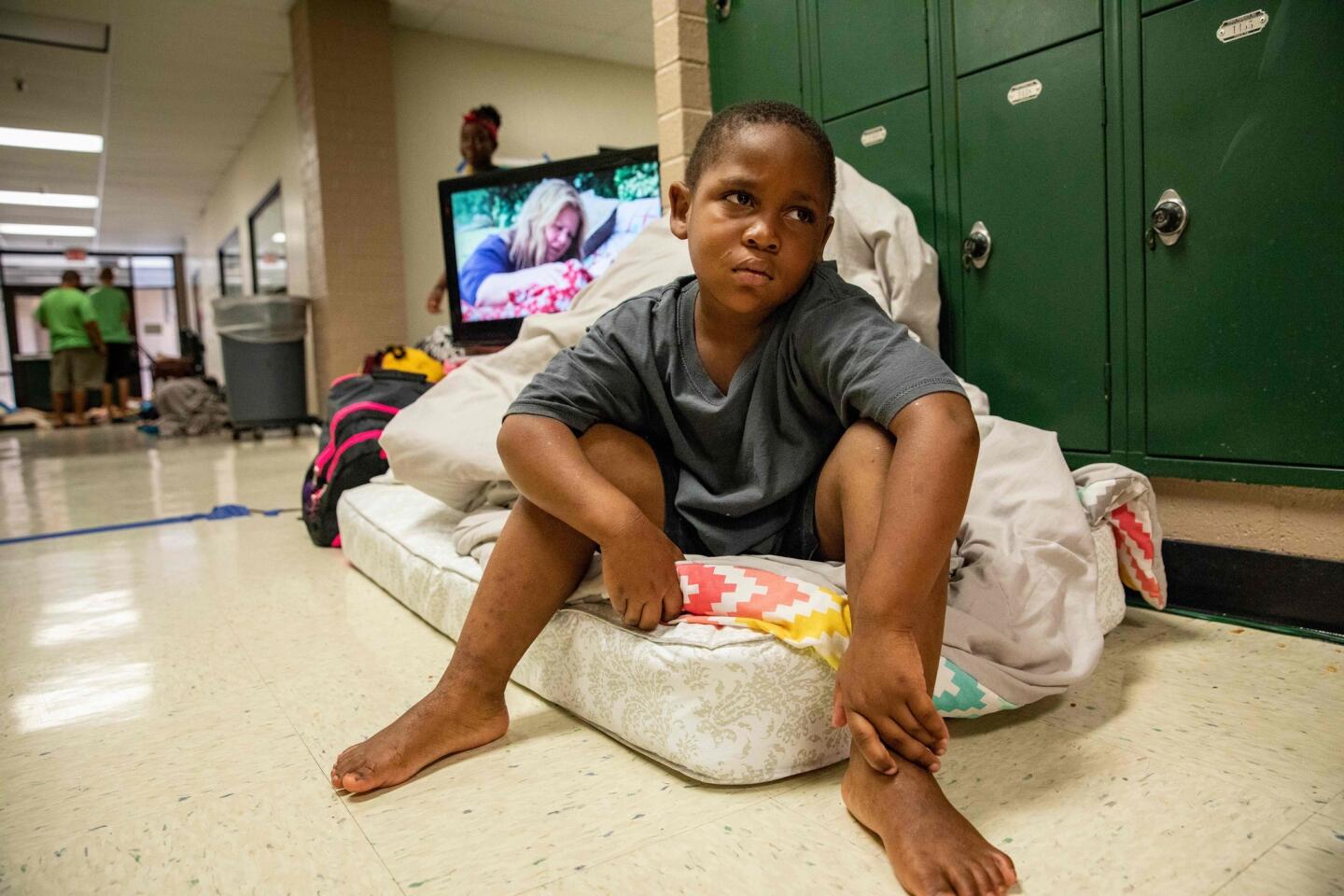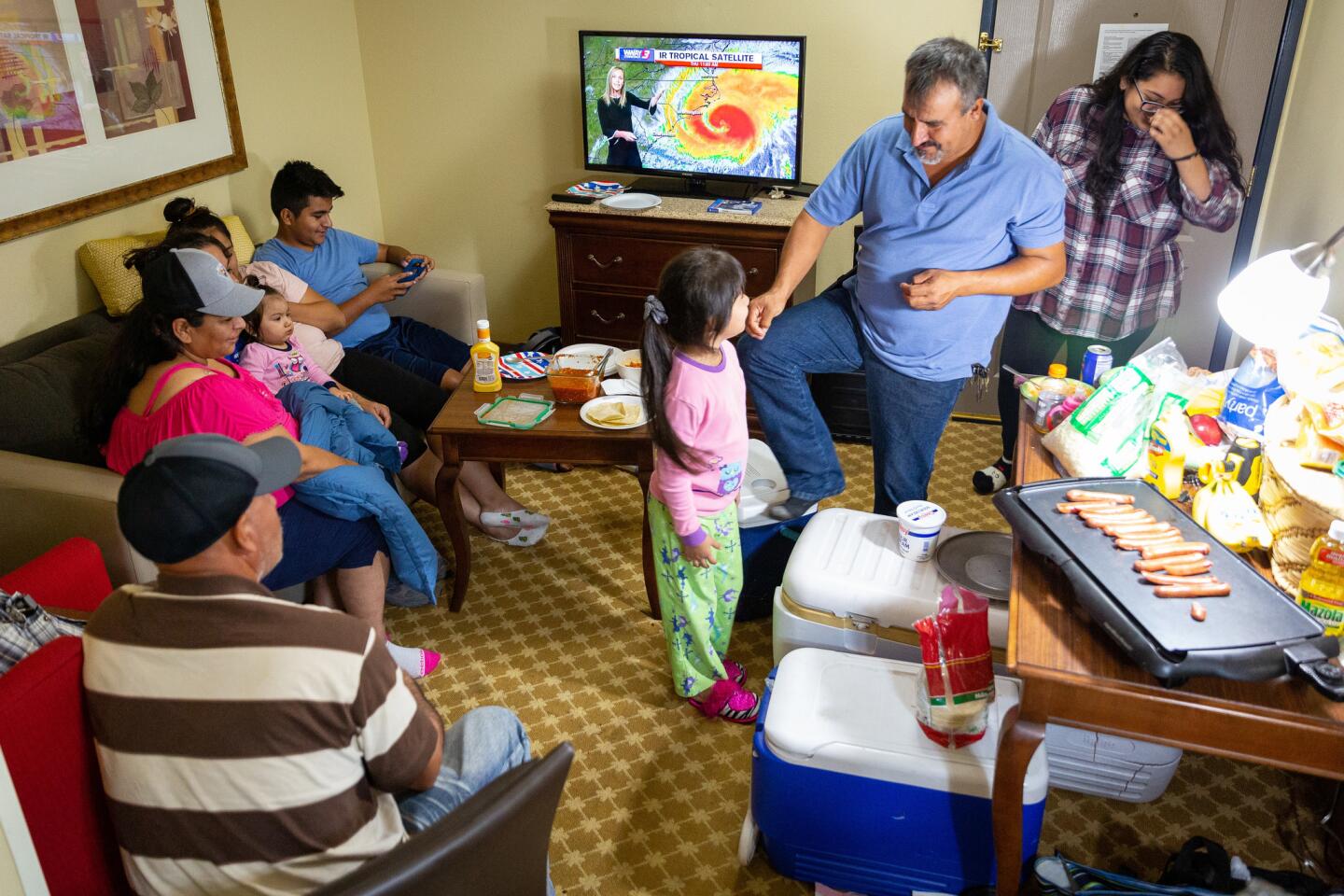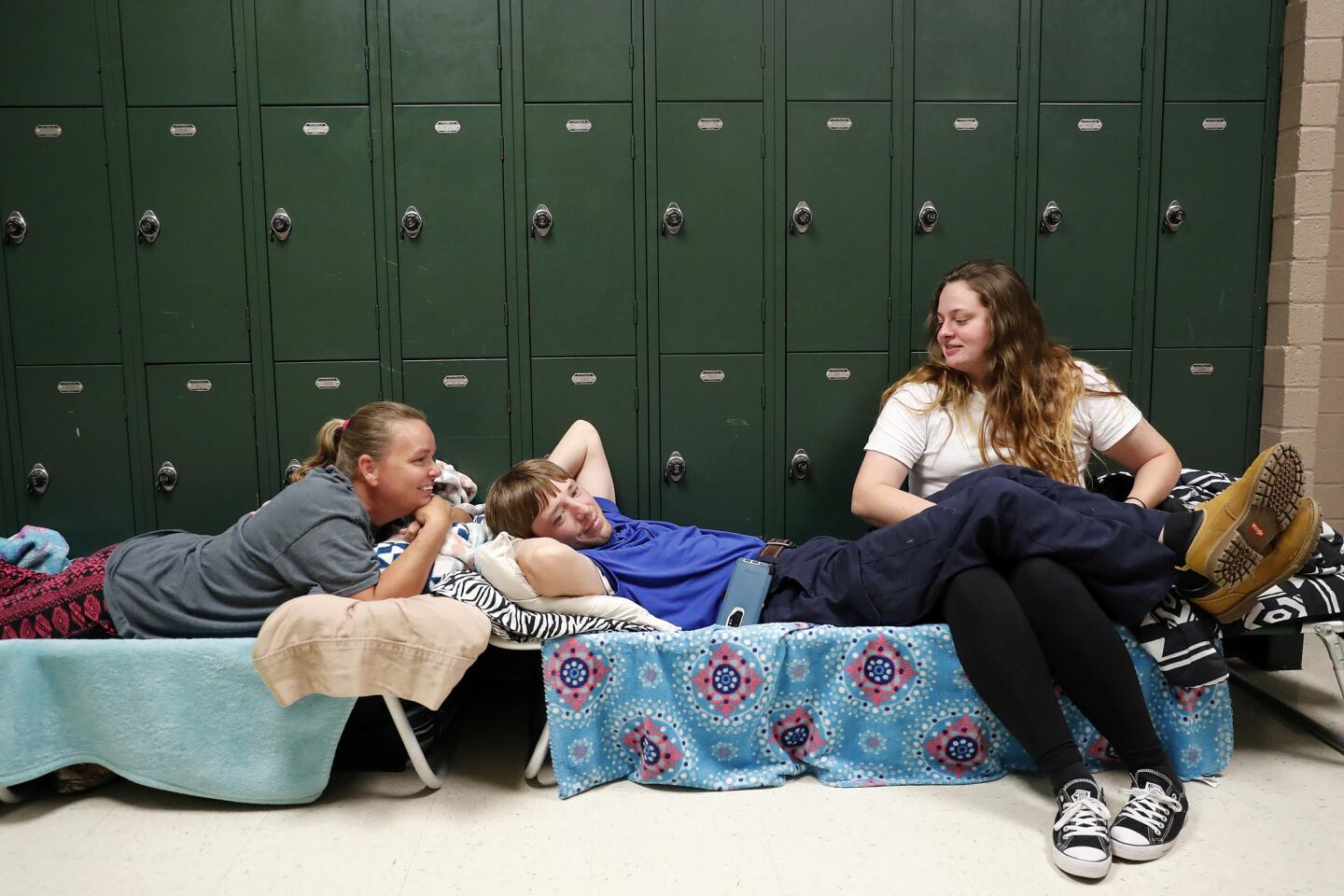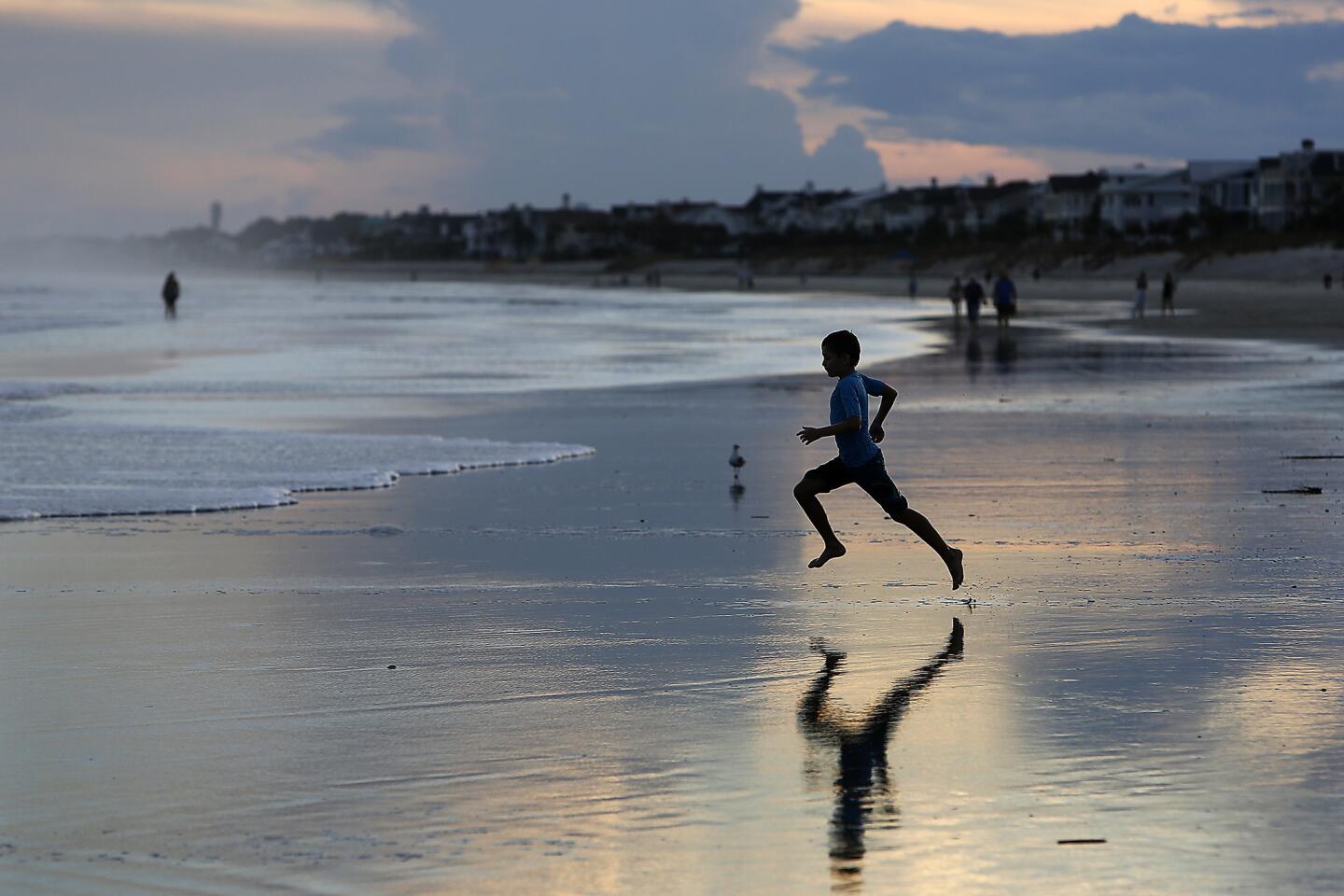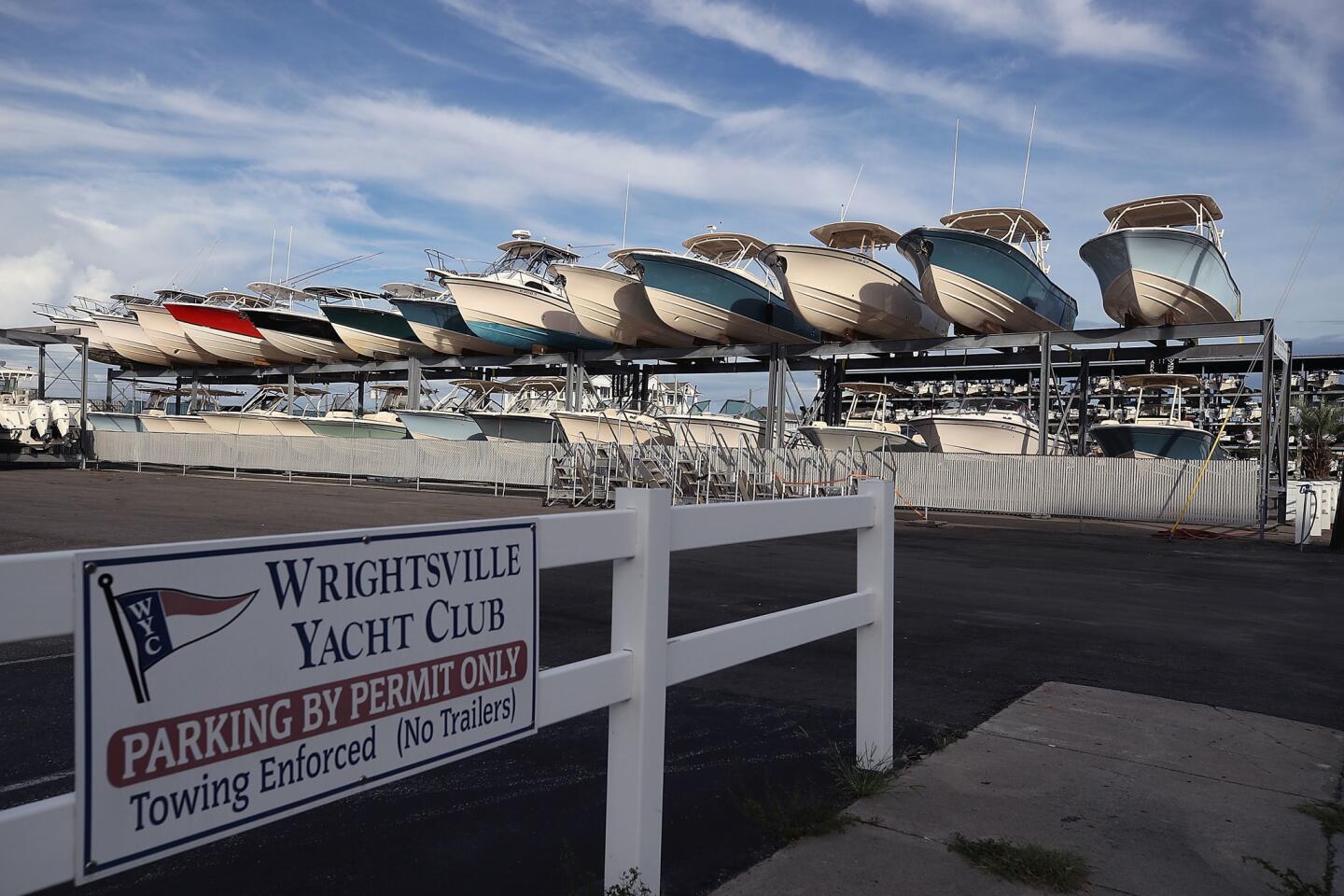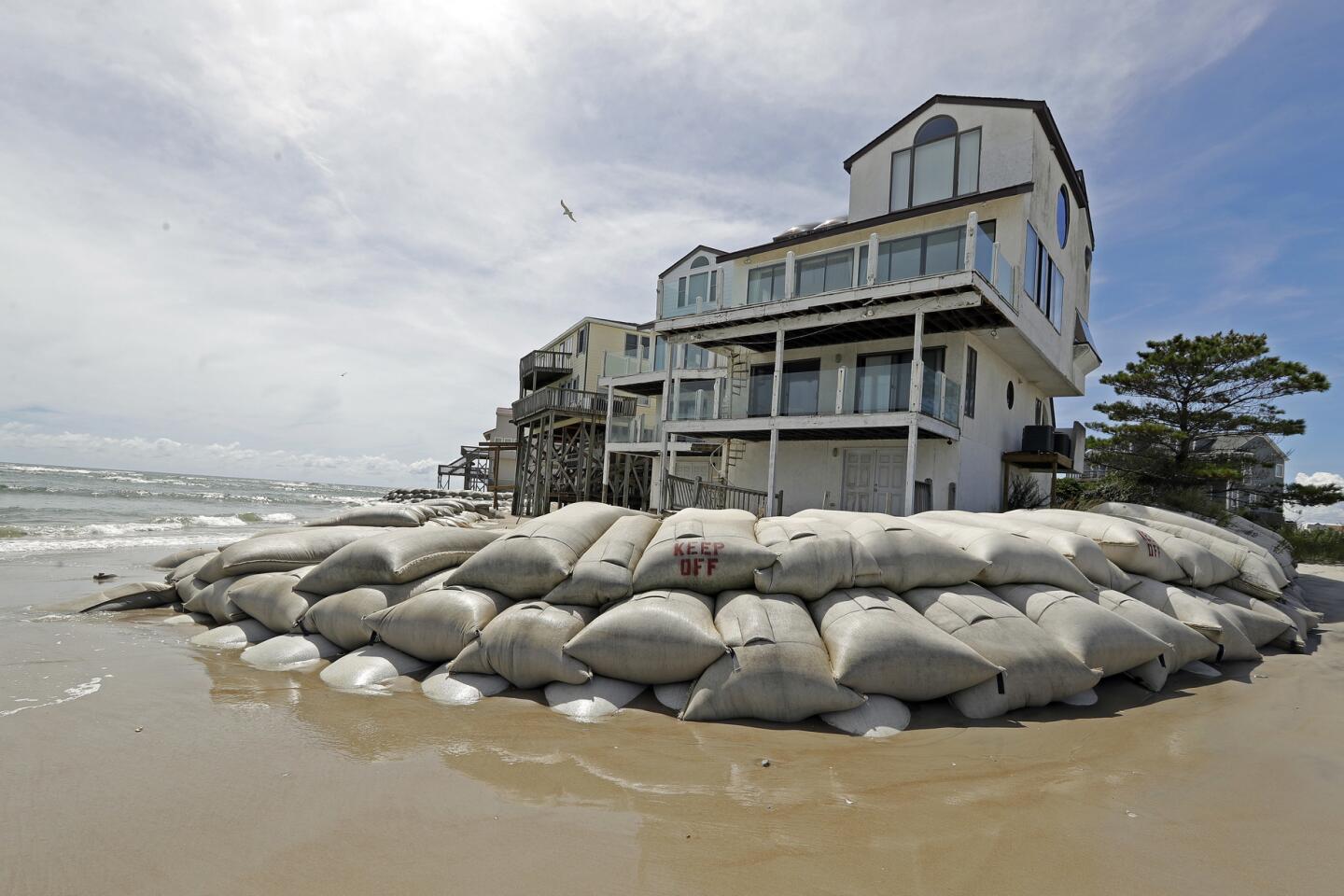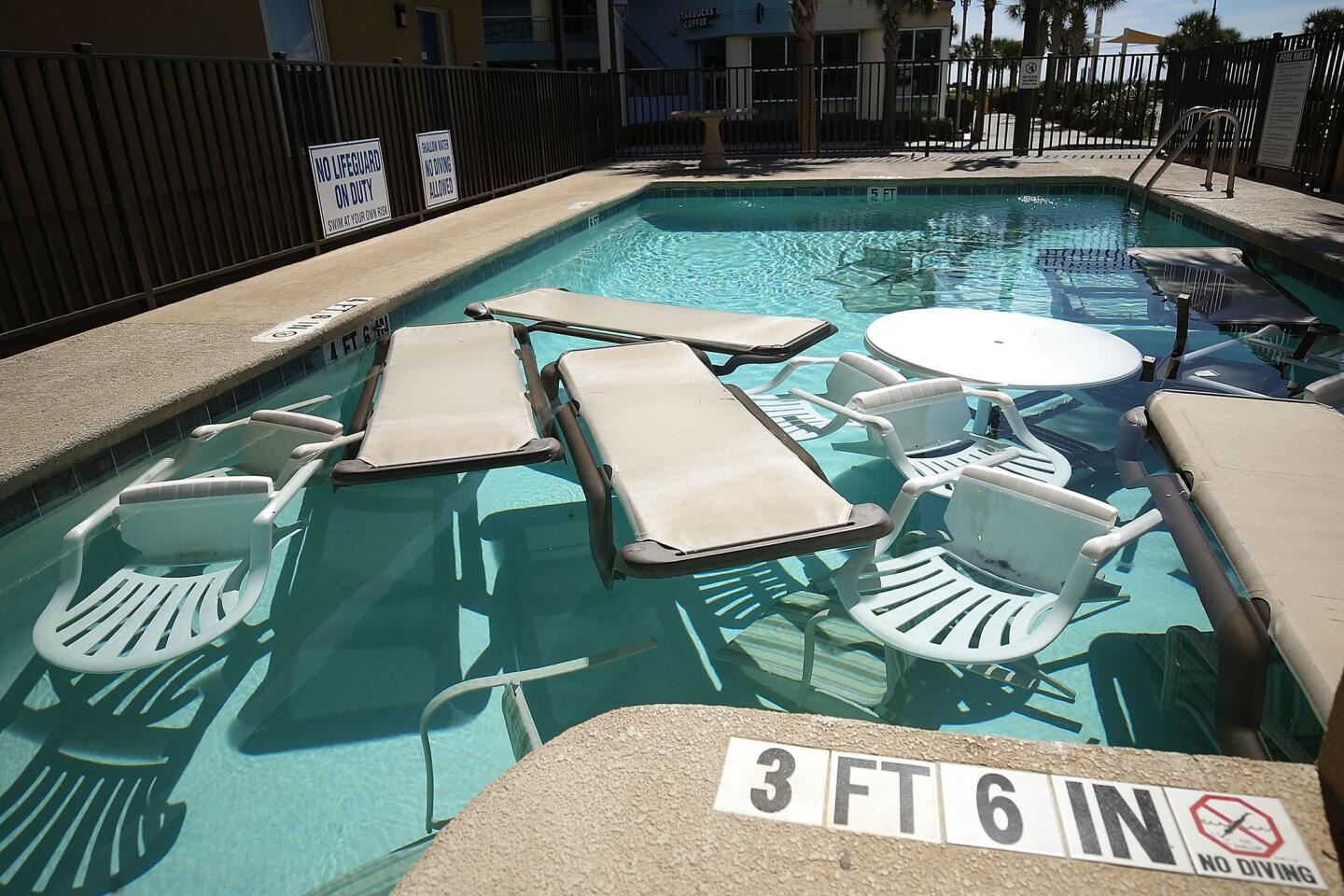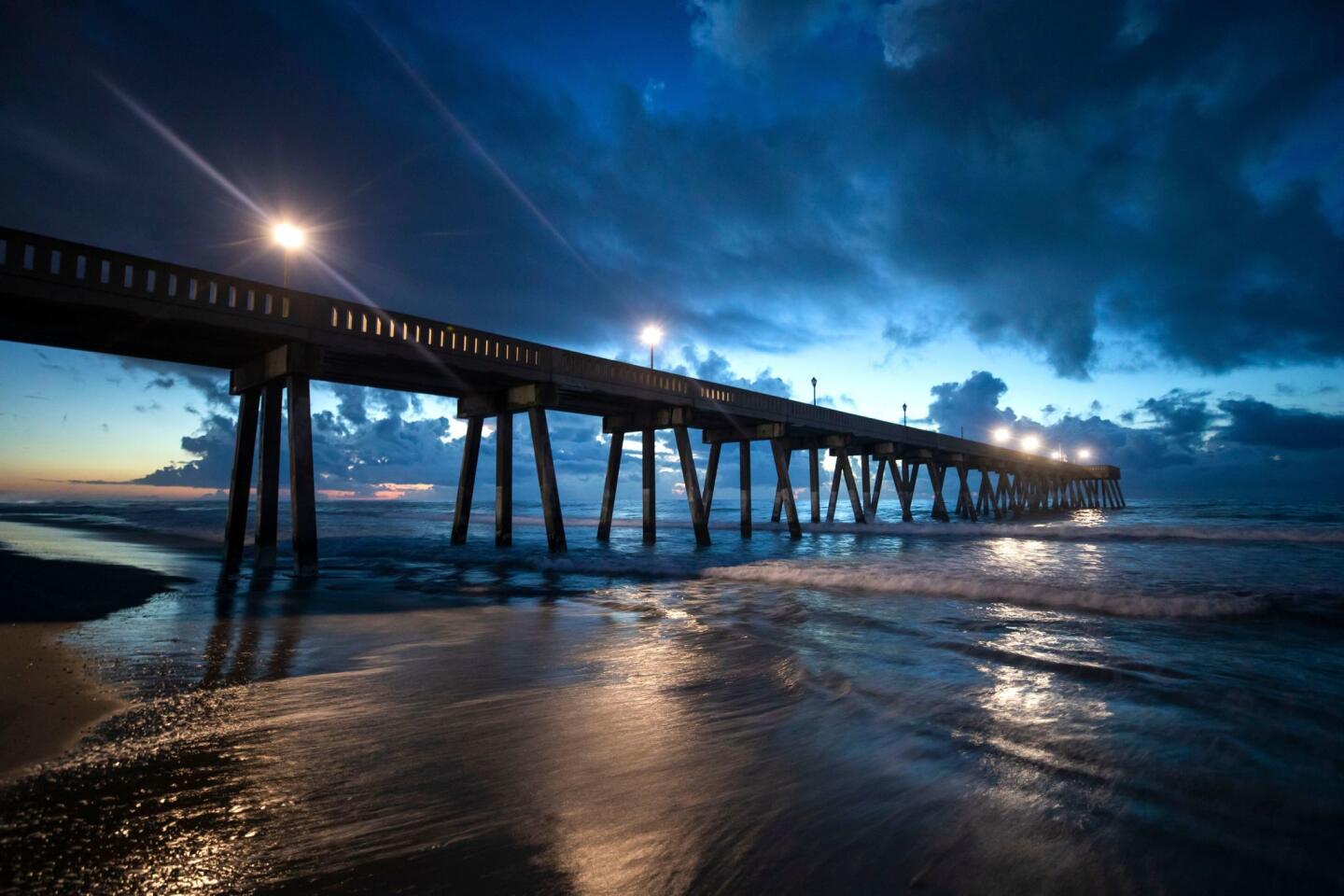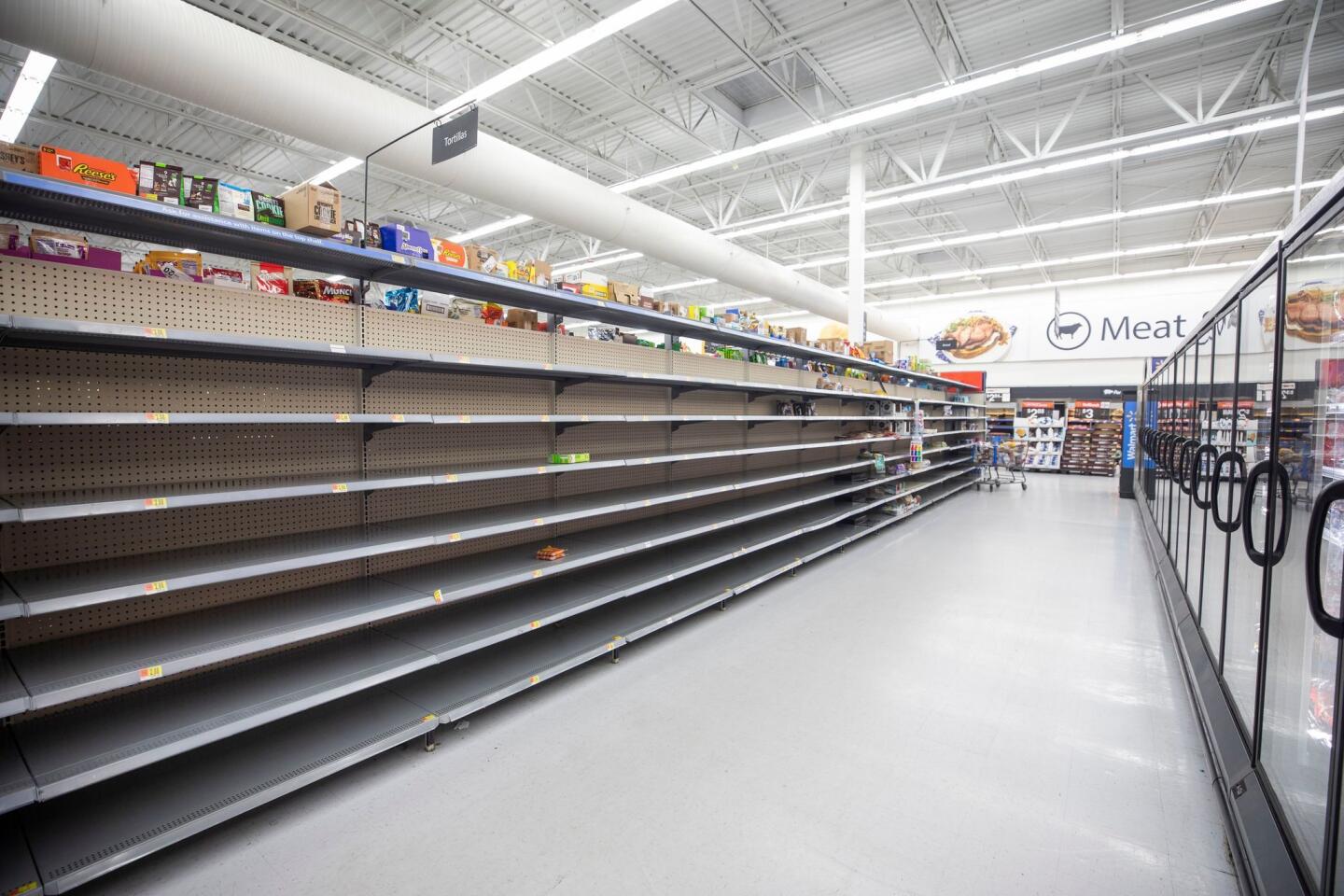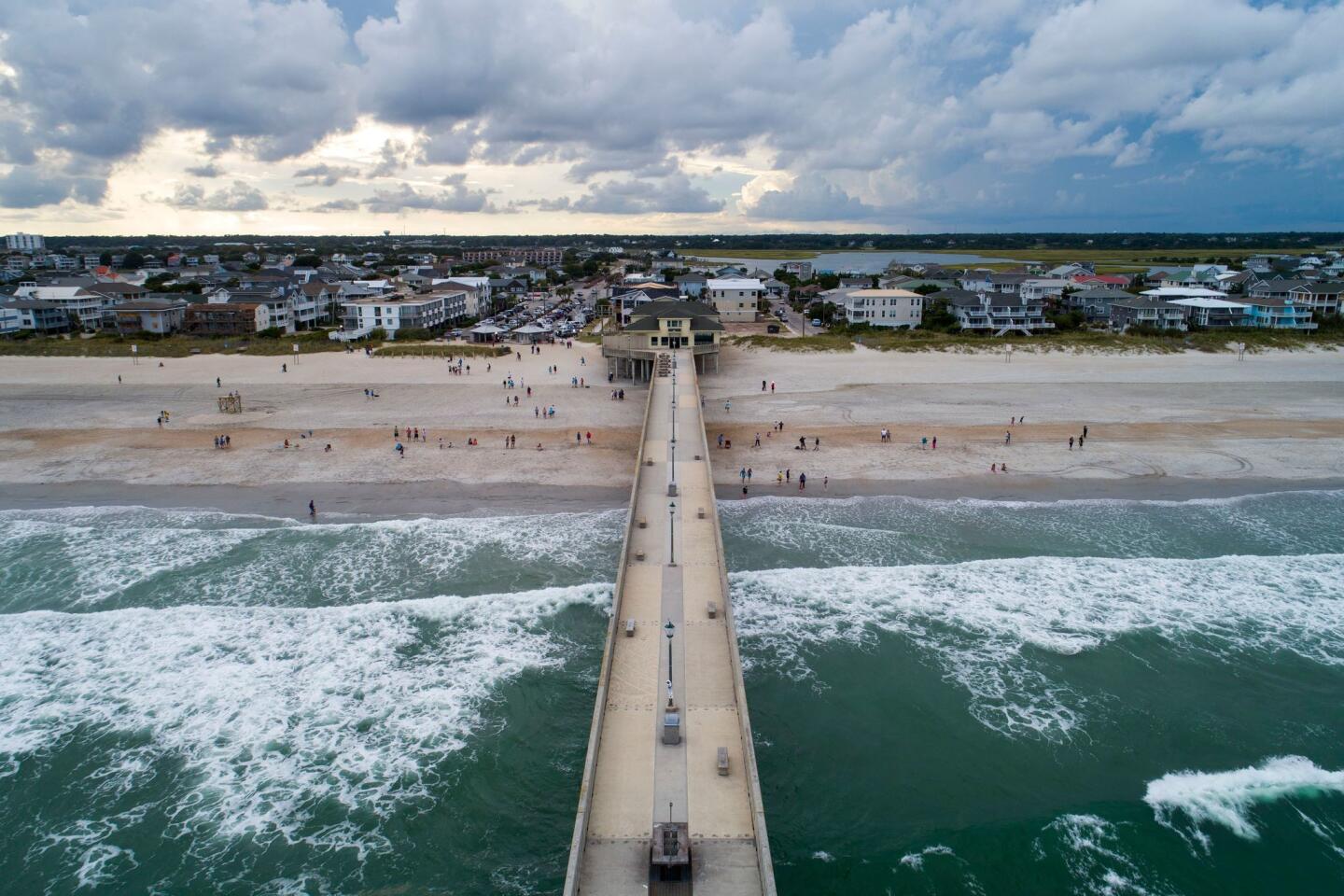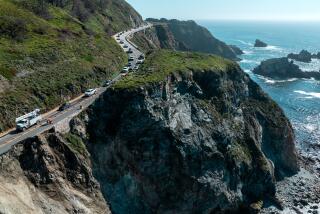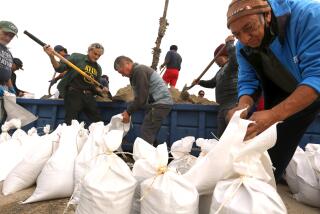Mandatory evacuations ordered as Hurricane Florence closes in on the Carolinas
Hundreds of thousands of residents from three states were told Tuesday to evacuate the Southeast coastline as Hurricane Florence barreled toward the Carolinas with 140-mph winds.
As more than 1 million people faced mandatory evacuation orders in coastal areas of North Carolina, South Carolina and Virginia, the westbound lanes of roads and interstates leading out of cities from Charleston, S.C., to Wilmington, N.C., were clogged with cars, SUVs, trucks and trailers hauling fishing boats, kayaks, bikes, caravans, Adirondack chairs, firewood and bales of hay.
“This storm is a monster. It’s big and it’s vicious,” said North Carolina Gov. Roy Cooper. “The waves and the wind this storm may bring is nothing like you’ve ever seen. Even if you’ve ridden out other storms before, this one is different. Don’t bet your life on riding out a monster.”
Not everyone, though, was clamoring to get out, even with the storm expected to make landfall Thursday or Friday.
As workers hammered sheets of plywood to the Edge of Urge boutique and a French bistro on Market Street in the port city of Wilmington, Ava Onan, 14, strolled in the sunshine near the Cape Fear River with a friend.
“It’s always so nice before the storm,” the high school student said as she dug a spoon into a cup of blueberry waffle-cone ice cream. “It’s so quiet!”
Like many residents, Onan did not plan to leave. She said she would hunker down with her family at her grandmother’s home, a historic mansion on Orange Street.
“It’s going to be bad, but we’ve been through hurricanes before,” she said with a shrug. “That house has been through Fran and two other hurricanes.”
On Tuesday evening, Florence was about 725 miles east-southeast of Cape Fear, N.C., with maximum sustained winds of 140 mph — a Category 4 hurricane.
The National Hurricane Center issued hurricane warning and storm surge warnings Tuesday for a long stretch of the coast from South Santee River, S.C., to Duck, N.C., and Albemarle and Pamlico sounds. A tropical storm watch was also in effect north of the North Carolina-Virginia state line to Cape Charles Light, Va., and in Chesapeake Bay south of New Point Comfort.
Federal Emergency Management Agency Administrator Brock Long said Florence was “setting up to be a devastating event” in the Carolinas and central Virginia.
“The biggest hazard that we are worried about is storm surge,” he said. “That’s the primary driver of the evacuations that are underway.”
In South Carolina, mandatory evacuation orders took effect Tuesday for about a million residents in eight counties across the state’s 187-mile coastline. A string of coastal communities in North Carolina and Virginia have also been placed under mandatory evacuation orders.
Inland areas, meanwhile, were urged to prepare for potential flooding as Florence is forecast to deliver heavy rainfall as it slows down and moves over the Carolinas and mid-Atlantic.
After strengthening Wednesday, Florence is forecast to weaken before it makes landfall, but is still forecast to be “an extremely dangerous major hurricane,” the National Hurricane Center said in a public advisory.
Stephen Keebler, a meteorologist with the National Weather Service in Wilmington, said the storm’s intensity would fluctuate.
“It’s going to be a really ominous threat anywhere across the coast of North Carolina and South Carolina,” he said. “It could certainly rival Floyd and Fran and maybe Isabel, and possibly even Hugo.”
In Wrightsville Beach, a 4-mile-long town in North Carolina made up of two islands separated by two bodies of water, officials ordered a mandatory evacuation effective Wednesday.
Still, late Tuesday afternoon many local residents were out on the beach, walking dogs, swimming, surfing and sitting in folding chairs under a cerulean sky dotted with light white puffs of clouds.
Some residents said they planned to evacuate — eventually.
“When they said the winds were going to 120 to 140 mph, I made up my mind,” Ken Ripley, 63, said as he took a break from fastening white shutters to the side windows of his blue-shingled three-story duplex — nothing separating it from the ocean but a stretch of sand and dunes.
Ripley, a retired stockbroker from Greensboro, N.C., had weathered many hurricanes and storms in the 17 years he has owned a vacation home on Wrightsville Beach. But Florence seemed different.
“120’s a deal-breaker for me,” he said of the wind speed.
President Trump told reporters he expected Hurricane Florence could be one of the worst storms in decades, and urged people living in evacuation areas to heed warnings from local officials.
“The safety of the American people is my absolute highest priority,” Trump said. “We are sparing no expense.… We are as ready as anybody has ever been.”
Trump, who received sharp criticism for the federal response to the devastation caused last year by Hurricane Maria in Puerto Rico, said authorities were “totally prepared” for a major hurricane.
Trump said the government response in Puerto Rico, where nearly 3,000 people are believed to have died as a result of the hurricane, was an “incredible, unsung success.”
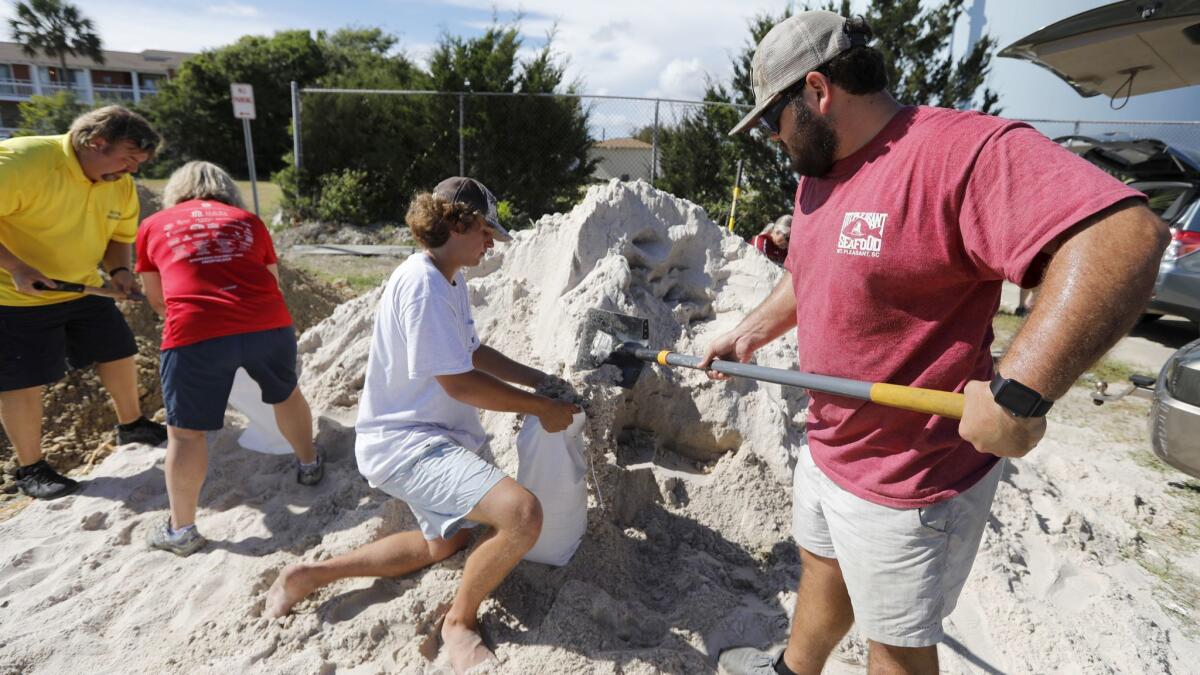
Twitter: @jennyjarvie
UPDATES:
9:15 p.m.: This article was updated throughout with Times reporting.
12:20 p.m.: This article was updated with additional details and reaction.
This article was originally published at 7:55 a.m.
More to Read
Start your day right
Sign up for Essential California for news, features and recommendations from the L.A. Times and beyond in your inbox six days a week.
You may occasionally receive promotional content from the Los Angeles Times.
